Cheap garden ideas: 42 simple ways to update your outdoor space for less
Our cheap garden ideas are perfect for giving your plot a fresh new look without having to splash the cash

Lisa Fazzani
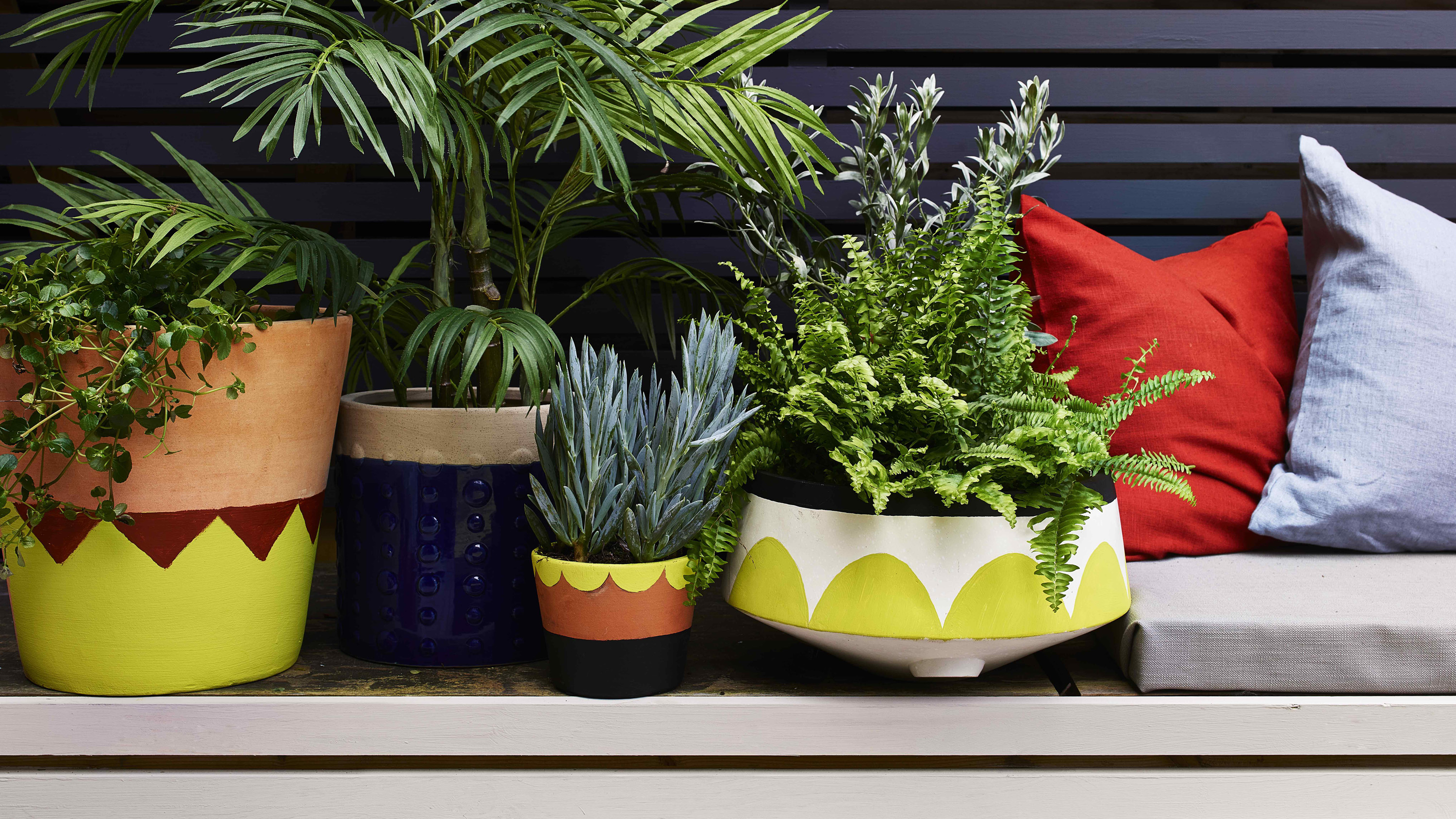
Our cheap garden ideas can still pack a punch when it comes to freshening up your space. They're perfect if you don't want to splurge all your savings on your plot.
In fact, combining savvy spending with a little gardening know-how means it's easier than you might think to introduce vibrant color, beautiful plants and bold personality to your outdoor space. Even little things, such as a good tidy-up, or planting a few seeds and watching them grow, can make a big difference to the look and feel of your garden.
From using salvaged items as plant pots and containers to making your own compost, or opting for inexpensive but stylish landscaping materials, we've put together tons of easy ways to save money on your garden design ideas.
42 cheap garden ideas to smarten up your plot
These budget garden ideas will get you inspired to transform your space, without splashing the cash.
1. Repurpose old wooden crates to make stylish shelves
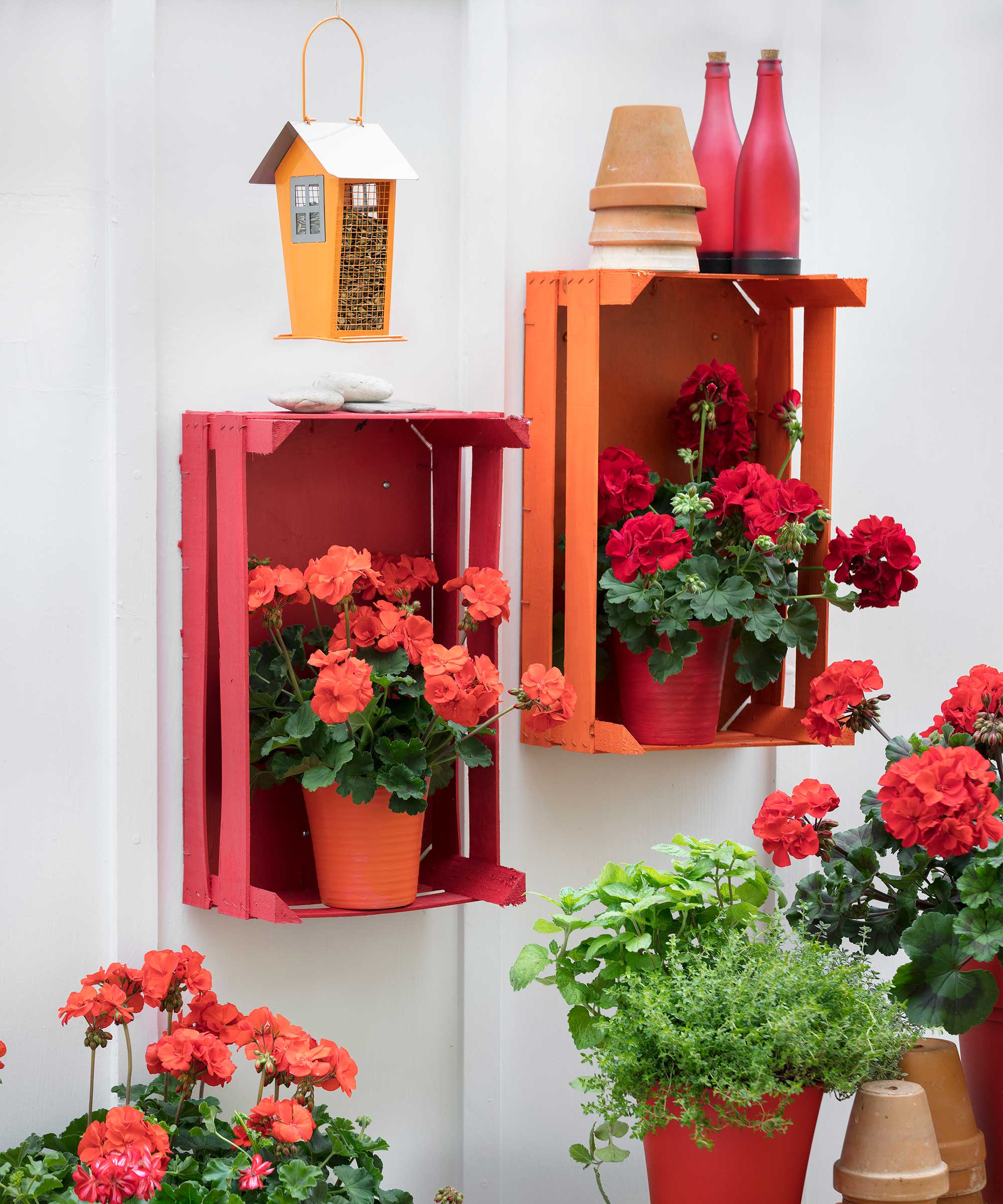
Make colorful wall cubbies to display flowering plants or garden bric-a-brac. It's simple, yet a lovely way to add interest to your space on a budget, particularly if you're looking for vertical garden ideas.
Use old wooden fruit crates to make mini shelves or opt for sturdier wooden wine crates to create a larger version. Paint crates all over in a colorful weatherproof paint and then attach to an outdoor wall or the side of a garden shed using wooden battens to secure.
Arrange single cubbies at staggered intervals or fix two or three cubbies together to create a pigeon-hole style shelf unit, then get creative making pretty displays.
2. Use old jars as mini planters
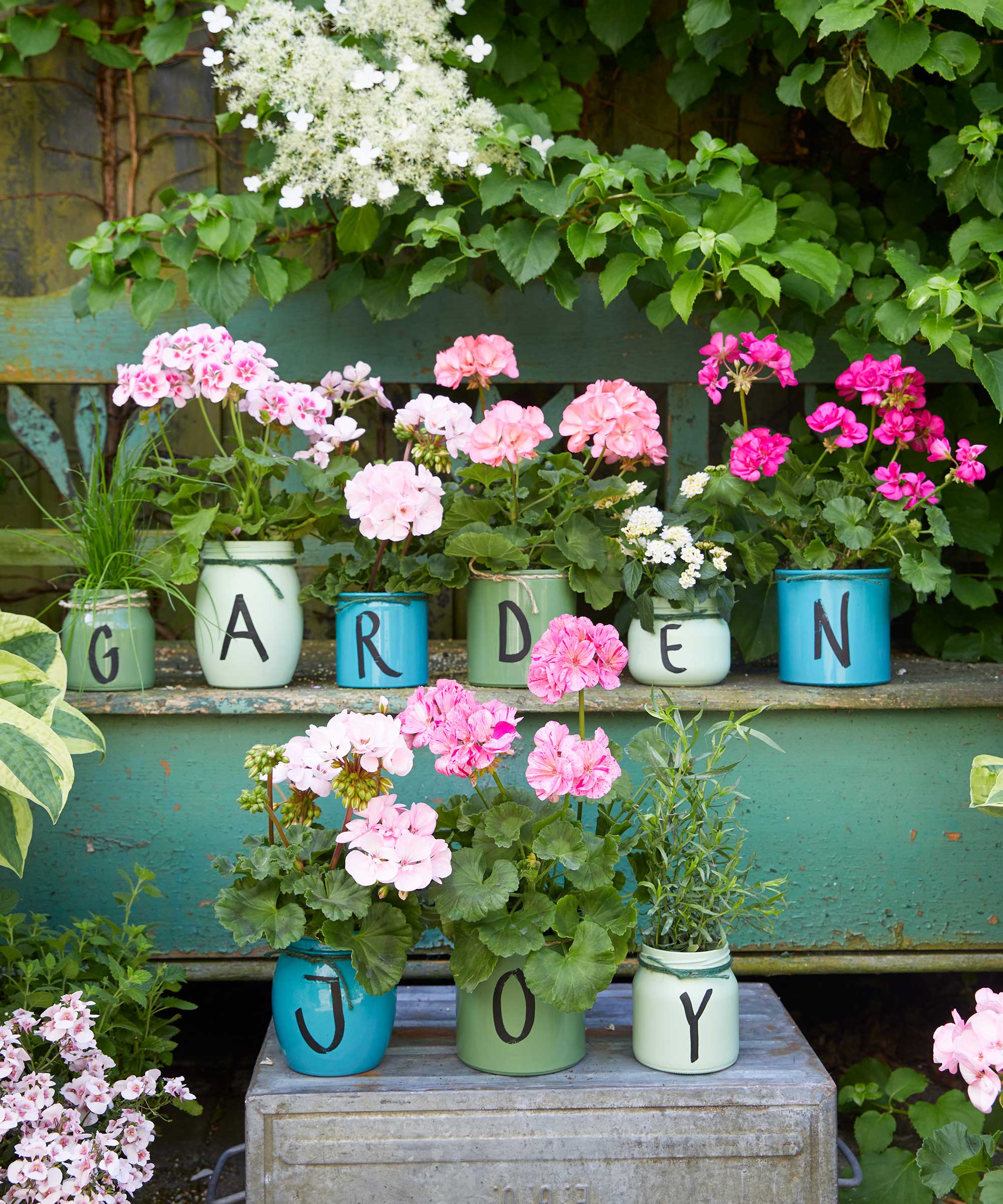
Instead of discarding old glass jam jars and containers, repurpose them and make jolly mini planters for herbs or flowering plants. Use leftover acrylic spray paint if you have any, or alternatively use old tester pots of paint, though you may need to seal jars with clear varnish to give a harder-wearing finish.
Once the jars are painted and completely dry, add lettering using a black permanent marker, and then finish off each jar with a wrap of garden twine tied in a bow.
It's a pretty idea for a garden display, or give them as gifts to visiting family and friends inscribed with a name or initial. And if you're looking to make even more of a saving, fill them with free plants – our guide explains how and where to find them.
3. Try DIY terracotta candle holders
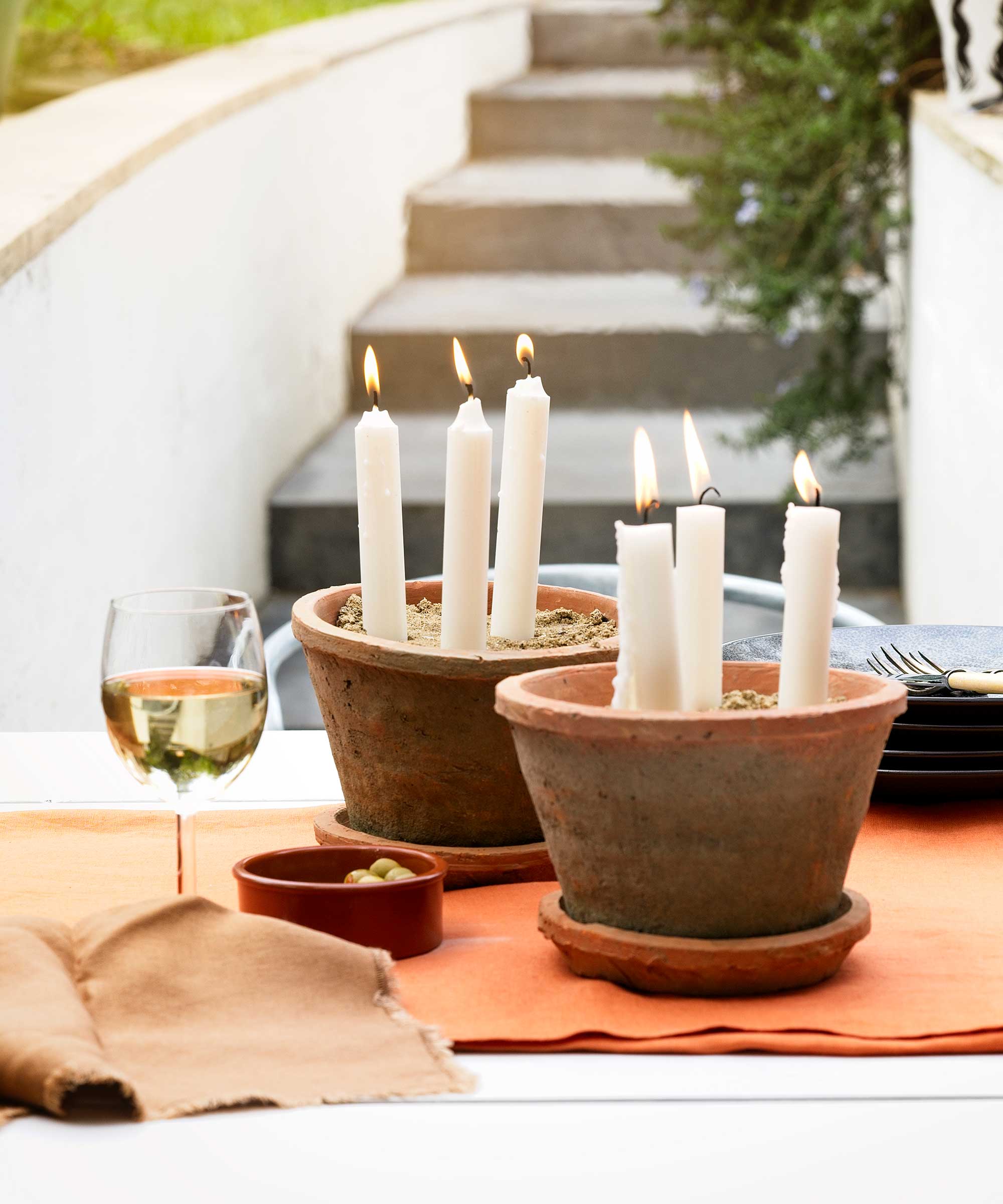
Stop mosquitoes and other bugs from becoming a pest on summer evenings outdoors by making scented candle holders to dot around a patio.
It's simple: just fill a few terracotta pots with sand and push in a trio of scented candles. Odd numbers always look more visually balanced than even, so opt for three standard-sized dinner candles or try seven or more skinny tapers instead.
Deter pests by using candles scented with citronella, lemon balm, or lavender and leave lit for a couple of hours, making sure that candles are out of reach of children or pets. Why not surround the space with some of our top plants that repel insects, too?
4. Create a cool, industrial-style aesthetic with oversized planters
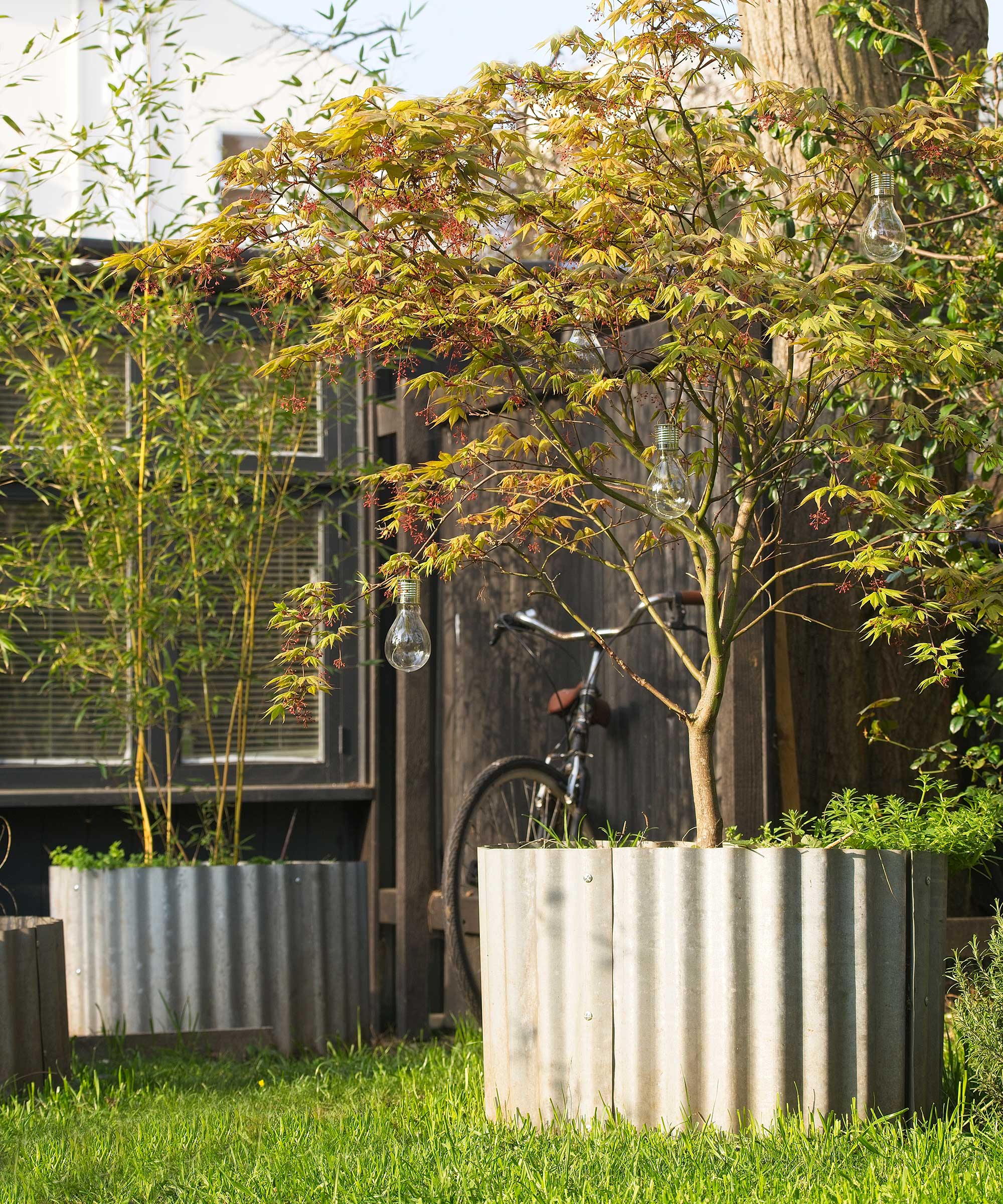
Buying tubs and planters for your container gardening ideas can cost a small fortune, especially when it comes to larger sizes. So for a budget alternative, try this purse-friendly idea for industrial-style planters that can be tailor-made in any size.
Use sheets of corrugated steel bought from a DIY store or builders' merchants and simply wrap a length into a large circle, then secure with roofing bolts into pre-drilled holes. Make sure that any ends are tucked inwards so that there are no sharp edges.
They're perfect for small trees or shrubs, or get creative with your favorite flowers.
5. Make an upcycled hanging planter
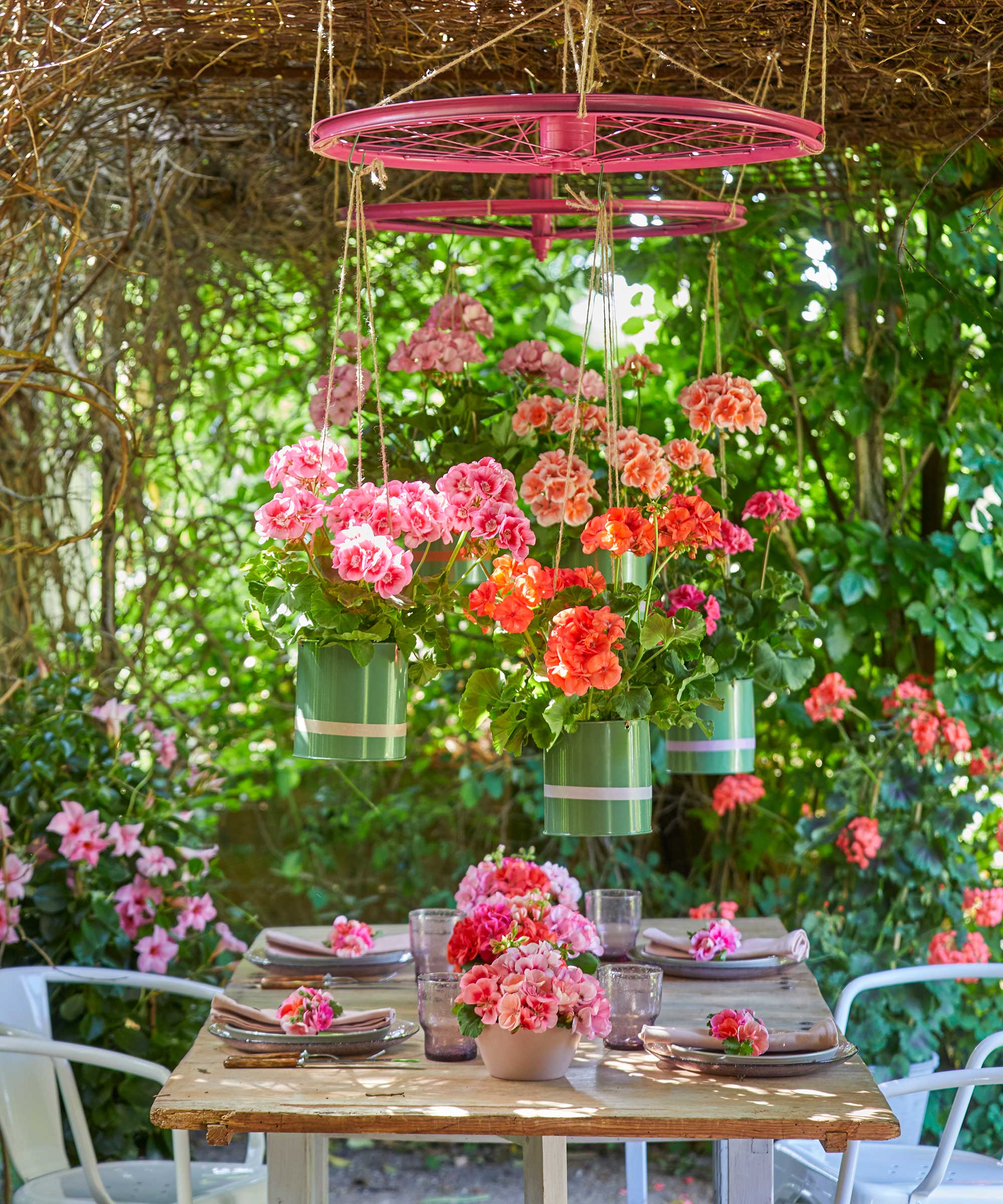
Looking for a budget backyard idea to brighten up your outdoor dining setup? Try making a cheap and cheerful hanging centerpiece to position above the table.
Use a pair of old bicycle wheels to create the framework for each hanger – just remove the tires first, spray paint them a cheery shade, and suspend from an overhead beam using a sturdy hook. Then, simply string a trio of hanging planters onto each wheel, using S-hooks to secure them in place. Make your own mini planters using spray-painted tin cans suspended with garden string.
Finish off by filling planters with colorful in-season blooms – our list of best plants for hanging baskets has plenty to choose from.
6. Guide the way with a cute garden sign
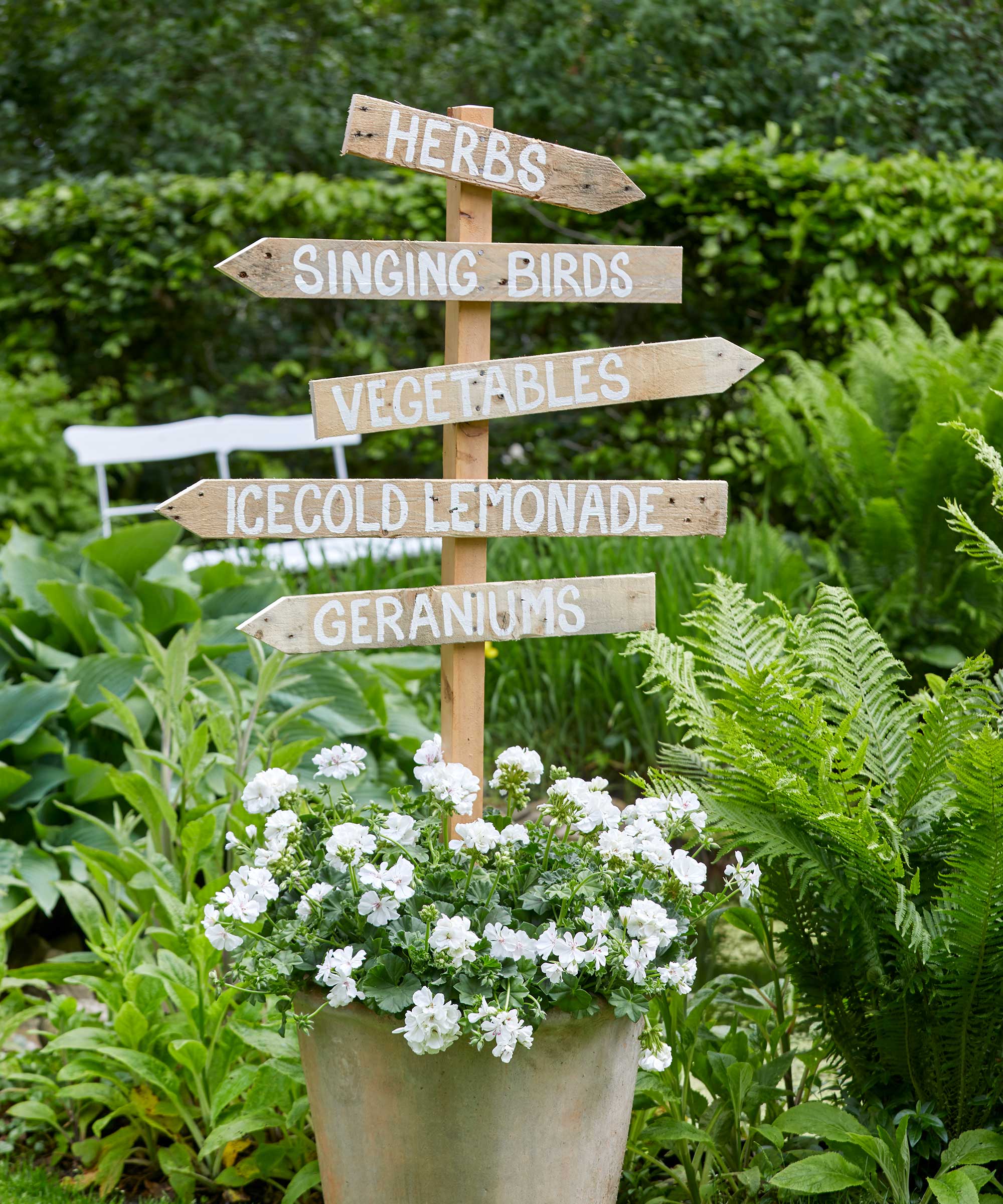
A brilliant addition for your next garden party or just a fun way of prettying up your plot, this vintage-style signpost is easy to make using reclaimed timber. Or, if you're looking for pallet ideas for gardens, this is a perfect way to use up leftover pieces of wood.
You'll need one long sturdy piece of wood to start with, which will act as the holding post. Make the pointer arrows from smaller pieces of wood, using a jigsaw or hand saw to cut points at one end of each piece. Decide on your wording and then paint these onto each arrow using weatherproof garden paint.
Finally, attach the arrows to the long post using a hammer and nails and firmly push the signpost into a sturdy planter or flower bed.
7. Glow up your shed
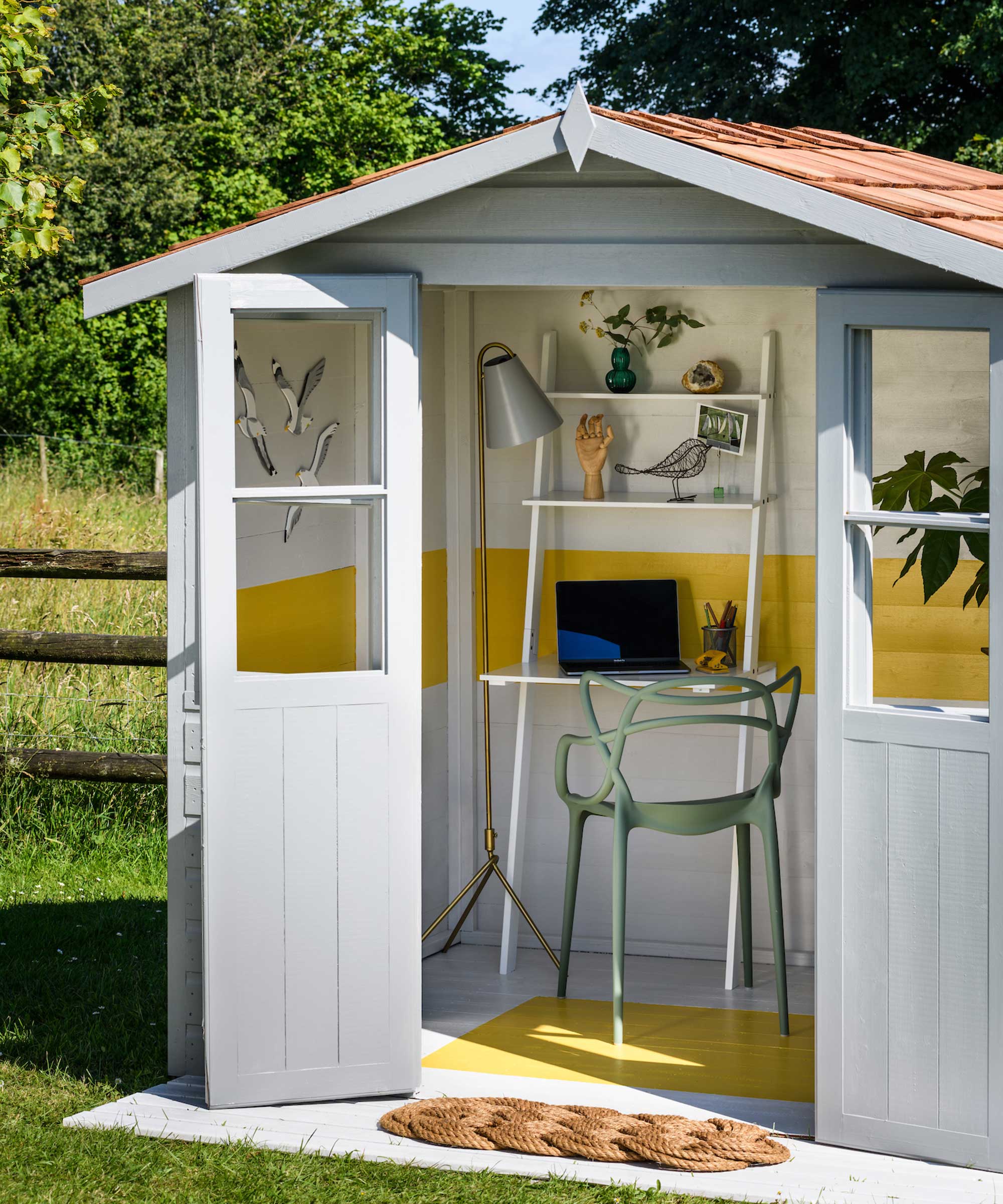
Makeover the garden shed and create a stylish WFH spot that you can escape to over the summer months – all it takes is a pot of paint and a sunny afternoon.
Painting the interior in pale, light-reflecting colors will help to open up the space and make it feel brighter and more roomy. Start with a couple of coats in soft, off-white to create a neutral backdrop, then once dry, add a wide band of contrasting color mid-way around the walls – a cheery yellow gives this space a warm, holiday-inspired vibe.
For the exterior, keep to muted shades of pale gray, soft blue, or sage green to complement. You'll have a she shed of dreams in no time.
8. Create a gorgeous garden display wall
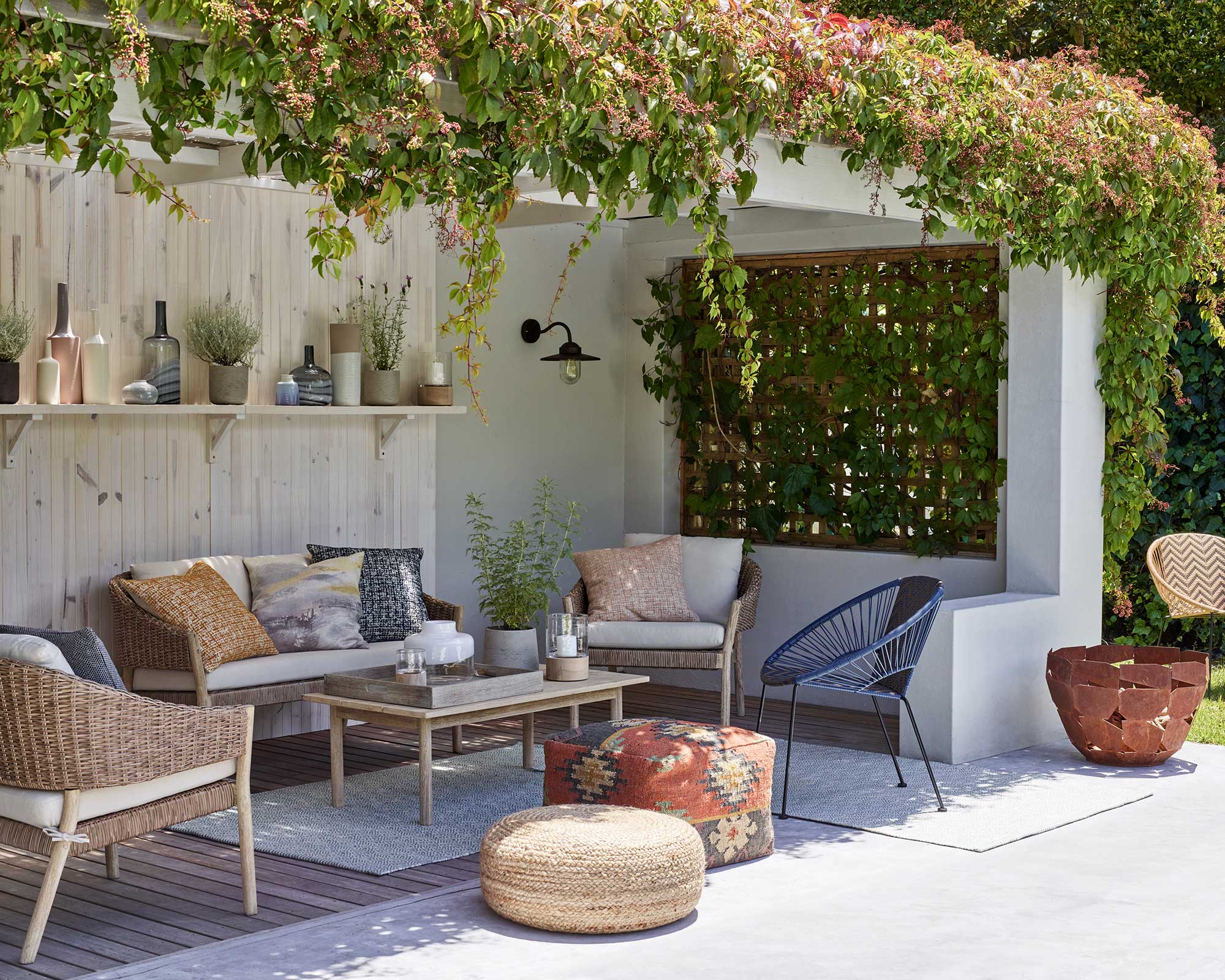
Brighten up your outside terrace or patio ideas by creating a display area for plants and garden ornaments. Use simple wooden shelves and brackets and treat with wood preserver or a colored garden paint to give a weatherproof finish.
Try one longline shelf to cover the entire wall area or fix several mini shelves up at staggered heights for a more random display. Opt for a mix of outdoor planters, lanterns, and greenery, choosing items of different heights and sizes, arranged in mini groupings along the shelves.
We love this example, which provides the perfect finishing touch to a covered seating space.
9. Make a statement with color
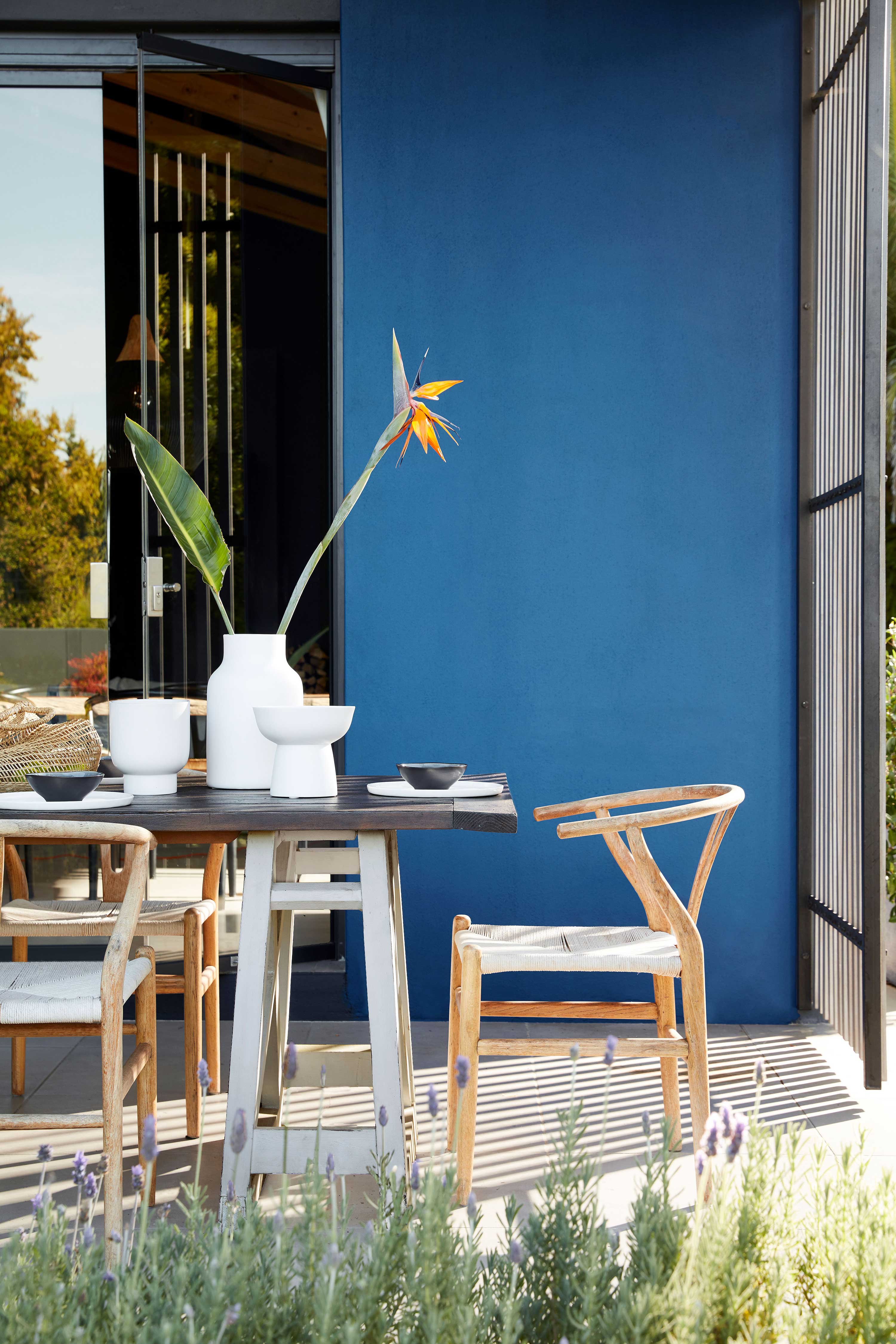
A lick of paint, no matter its color, can do wonders in smartening up a lackluster space. And, seeing as you only need to buy the paint and a few brushes, it's an affordable update to make.
To really turn heads this season, why not create a statement feature wall with a bold hue? This vibrant blue will instantly make a space feel on-trend.
'Decorating the exterior not only weatherproofs and protects your home, but it's also the perfect opportunity to add design personality to the outdoor space,' says Ruth Mottershead, Creative Director of Little Greene. 'I love to use color in unexpected or surprising ways to update an outside area. Even the smallest outdoor space can be transformed with a splash of color into a place in which to escape and retreat to at the end of the day.'
It's a perfect solution if you're after low maintenance garden ideas, too.
10. Make a pretty table runner with wallpaper

Try this free garden idea for family gatherings or summer garden parties. Instead of buying disposables or linen tablecloths, just cover up a shabby outdoor table with a colorful paper runner made out of a leftover roll of wallpaper.
There's no need to worry about spills and stains, just cut a length off as required, and then once the meal is over, simply dispose of it.
11. Build your own fire pit
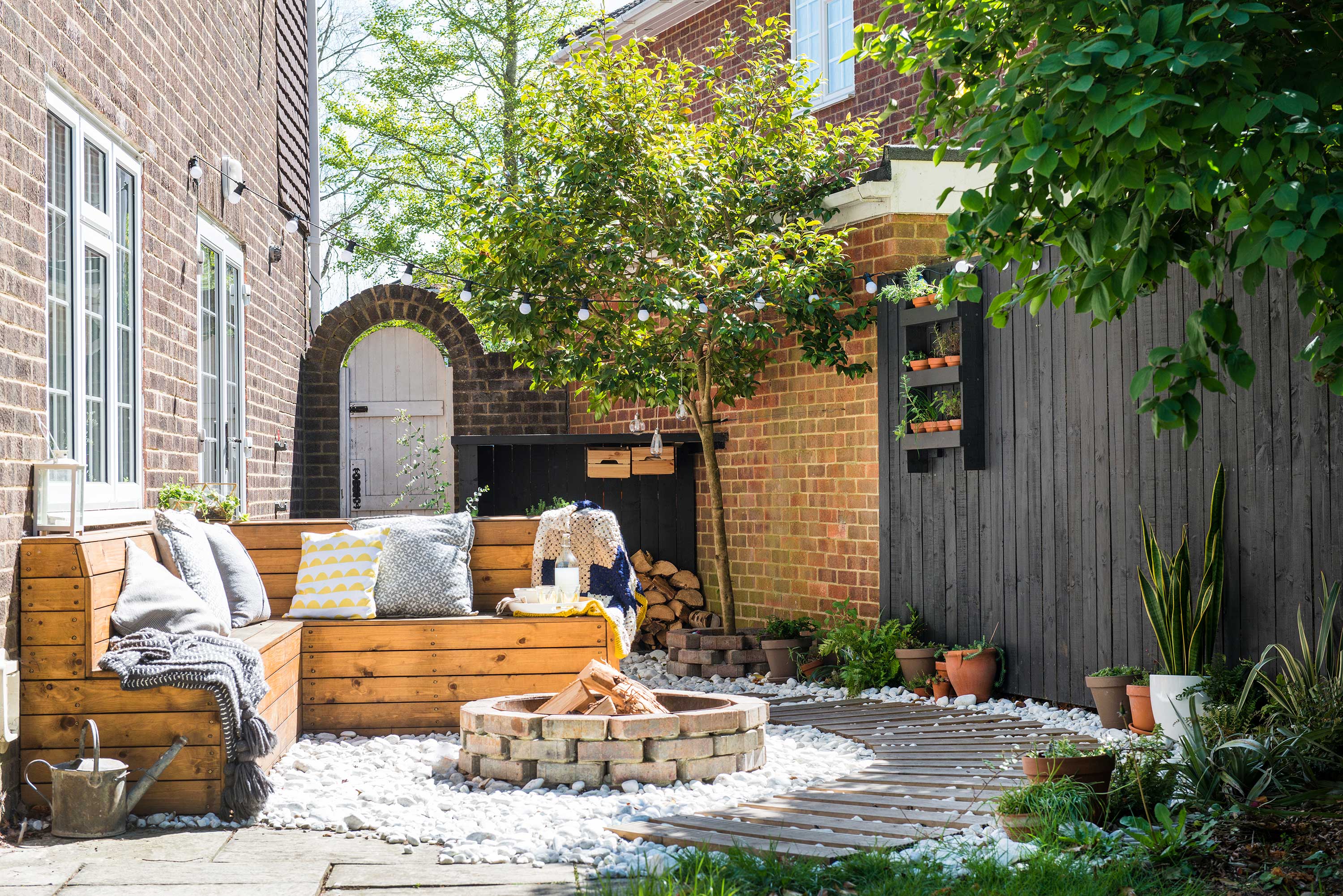
Everyone loves a fire pit – they offer an unbeatable atmosphere and keep things cozy well into the evening. However, they're not always the most affordable addition to a plot.
So, if you're hankering for that warm glow but want to keep an eye on your spending, why not build your own? It's not too tricky to do (our guide on how to build a fire pit has all the tips you need), and you'll be rewarded with a rustic feature that all the family will love.
12. Grow a lawn from seed
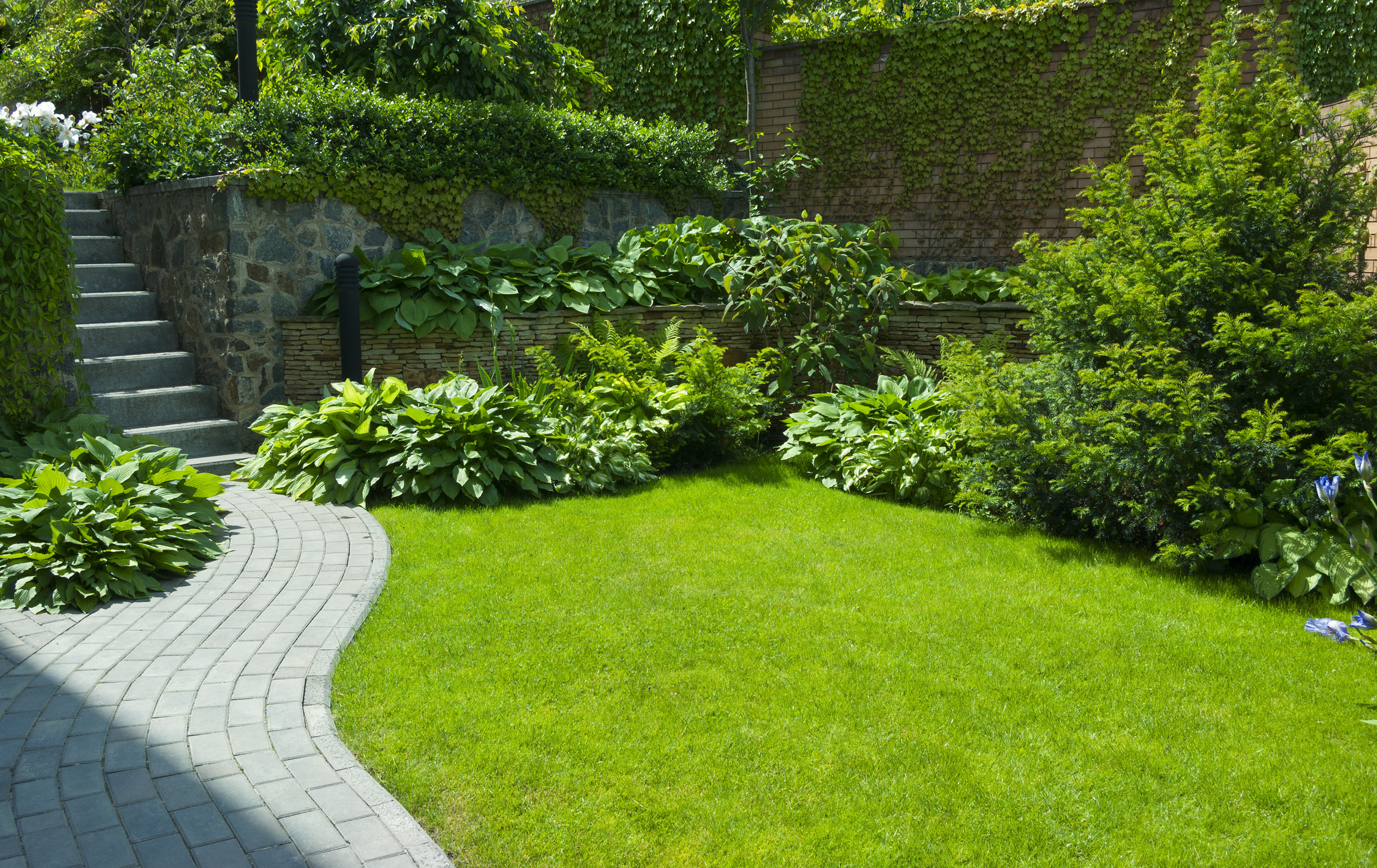
A luscious lawn is ideal for summer picnics, or to provide a space for the kids to burn off steam. However, if you've been considering one for your plot, then you might be wary of the costs. After all, turf isn't the cheapest, and can be tricky to lay.
However, there's another option that's easier and more affordable: to grow a lawn from seed. If you sow it at the right time of year, you won't even have to wait that long for it to grow.
Our feature on how to plant grass seed has useful step-by-step advice.
13. Give your garden furniture a clean
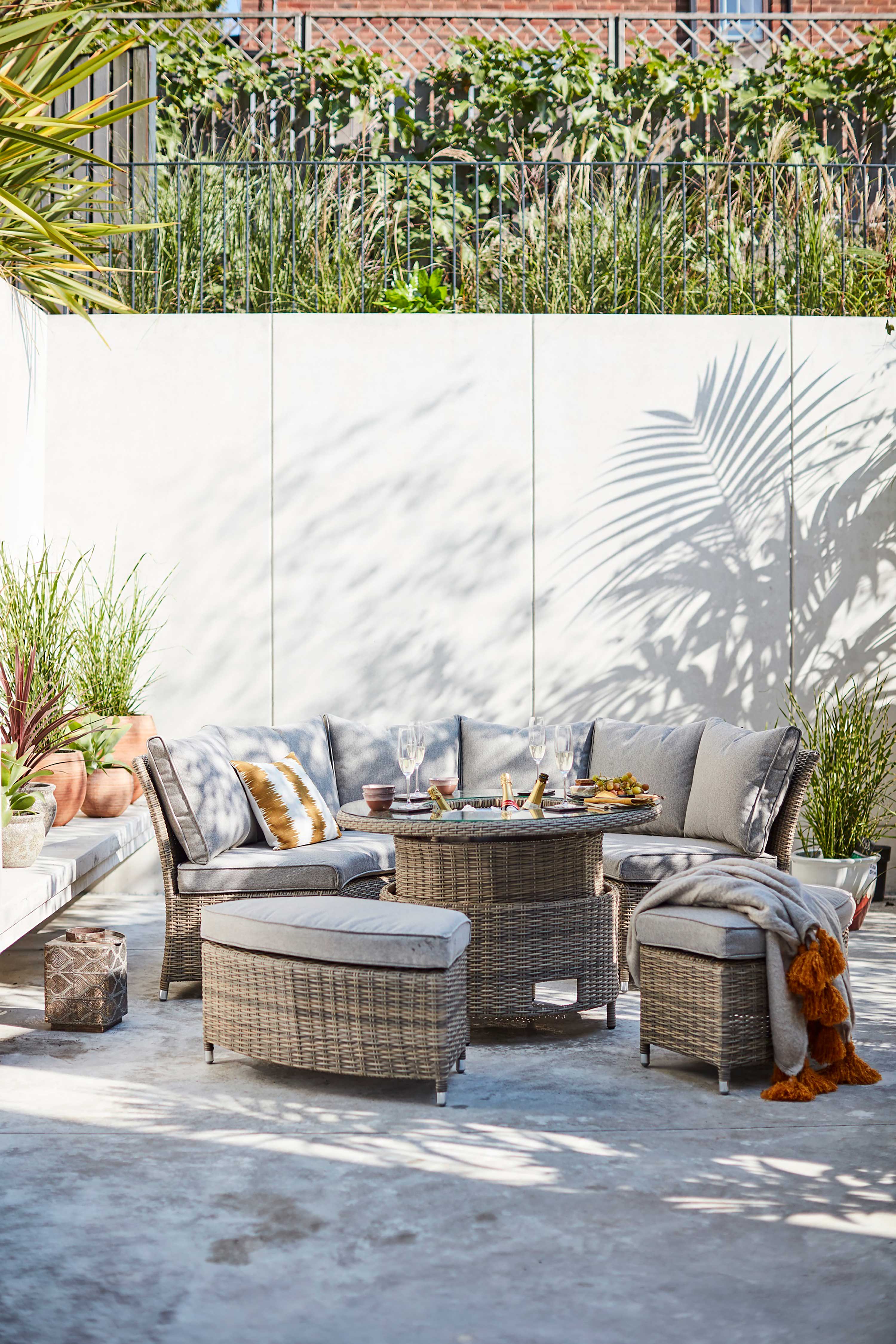
Cleaning up a space is one of the most affordable and effective ways to make it feel fresh and welcoming. So, if you're looking for cheap garden ideas, why not start by giving your furniture a spruce?
After all, no one wants to sit on a muddy chair or eat from a table covered in cobwebs and leaves. So, to get your patio space looking spick and span, grab a bucket of warm soapy water and sponge, prepare to use a bit of elbow grease, and give everything a good wipe down. You'll find all the advice you need in our guide on how to clean outdoor furniture.
14. Add a lick of paint to your tables and chairs
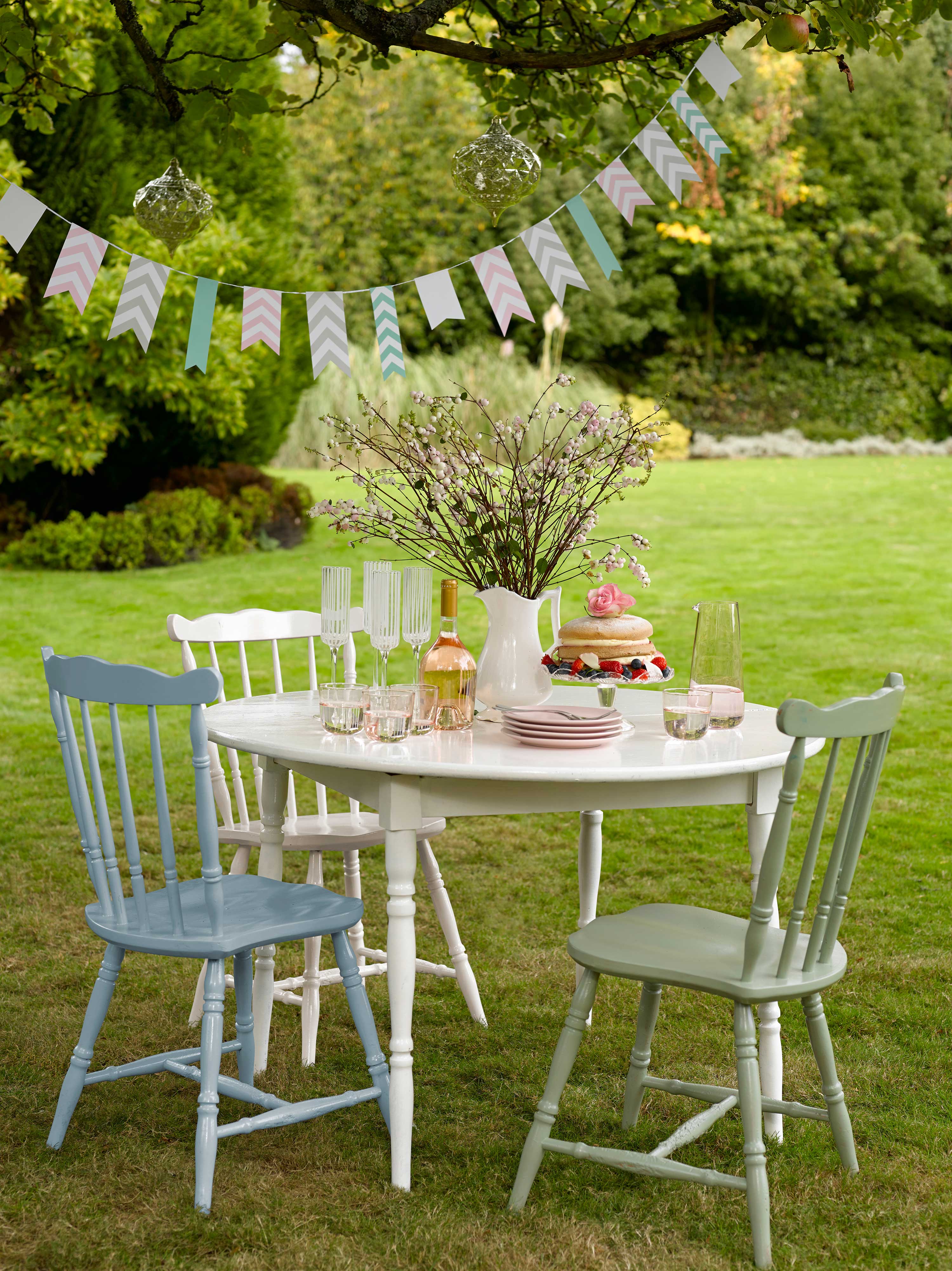
'Painting a plot is a quick and inexpensive way to give a fun and personal twist to the garden and make something plain stand out,' says Matthew Brown, Technical Consultant of Sandtex. 'If you're looking for an easy job, a single flush of color will look great, but stenciling is also an effective way to get creative.'
When painting your furniture, choose shades that are similar to the colors of other outdoor elements (perhaps the exterior of your home, windows, doors, or furniture), Matthew suggests. This will create a really cohesive and sophisticated look. 'But if it's a touch of confidence and fun you're after, why not go bold with a contrasting tone?'
No matter the effect you choose, make sure you pick a paint that's suitable for use on exterior wood and metal and that will protect the furniture from the weather, adds Matthew. And, 'before applying the product, always make sure the surface is clean and dry.'
Our feature on painting garden furniture has lots more tips for your cheap garden ideas.
15. Repurpose tins
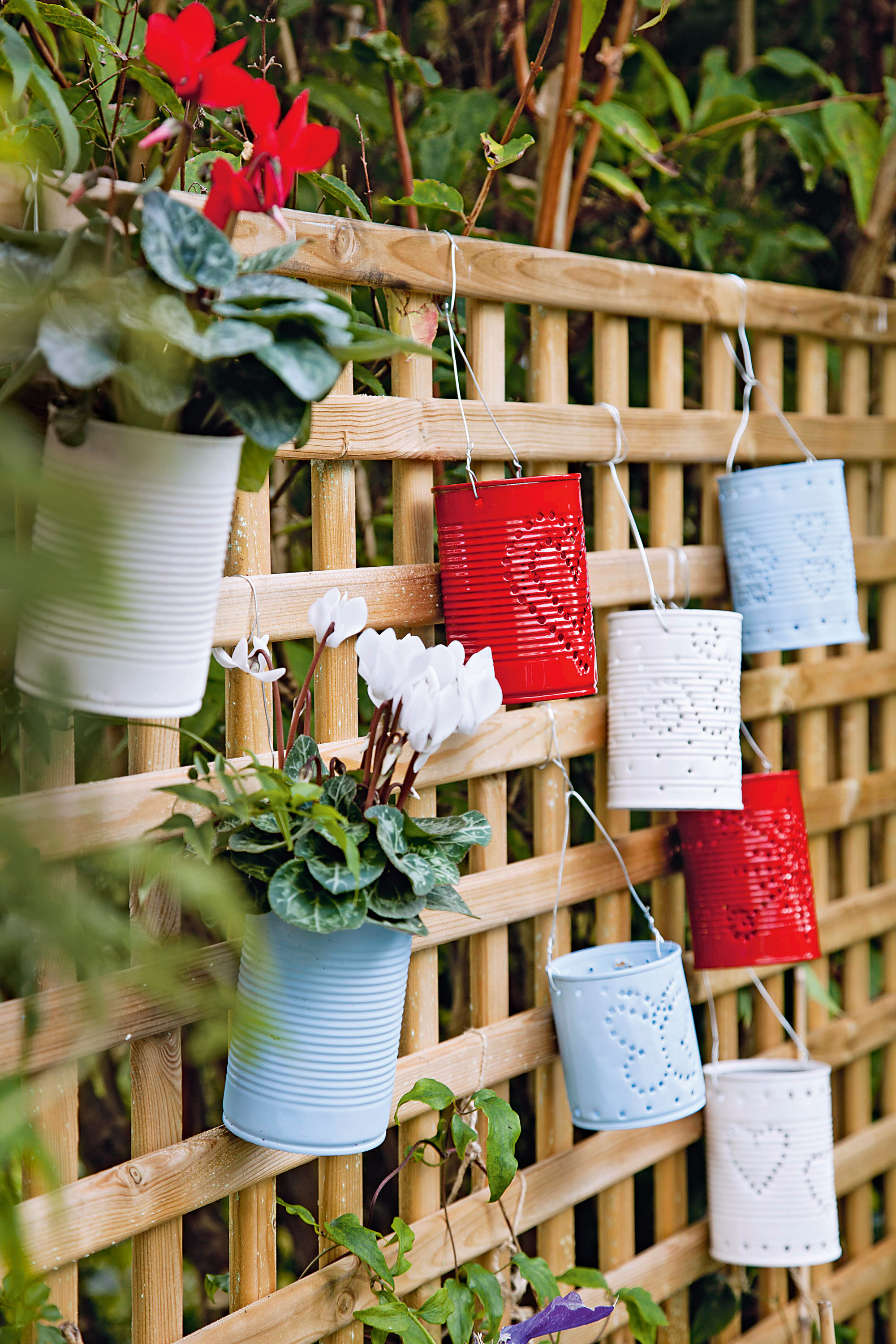
This idea is great if you're after a creative project to fill a sunny afternoon. Simply wash out old tins, give them a good dry, and spray paint them in your favorite colors. Fill with small flowers, or even LED candles for an atmospheric glow.
If you want to punch out holes to create pretty patterns, or to attach string so you can hang them up, first fill the tins with water and then freeze them. This prevents the metal from bending.
16. Upcycle pallets for pretty planters
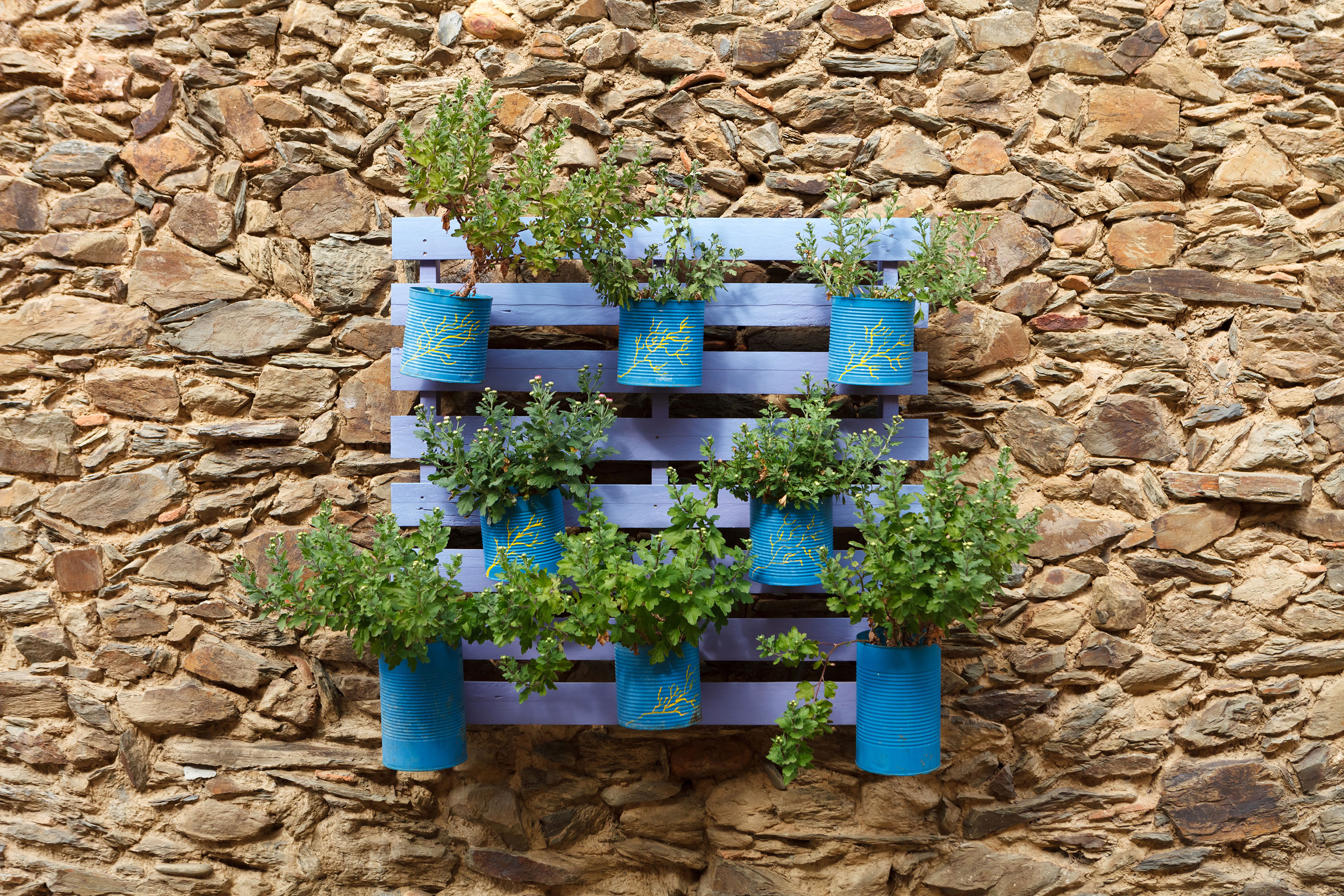
Pallets can be found for very little money (and are often free). So, if you're looking for cheap garden ideas, they're a great place to start.
With just a few DIY skills, the possibilities are practically endless – our pallet furniture ideas feature has tons of ideas. This one above has been painted in a gorgeous blue hue and fixed to a wall to hang plant pots from. It makes a pretty feature for any plot, will be fun to make, and won't cost the earth.
17. Give old tires a new lease of life
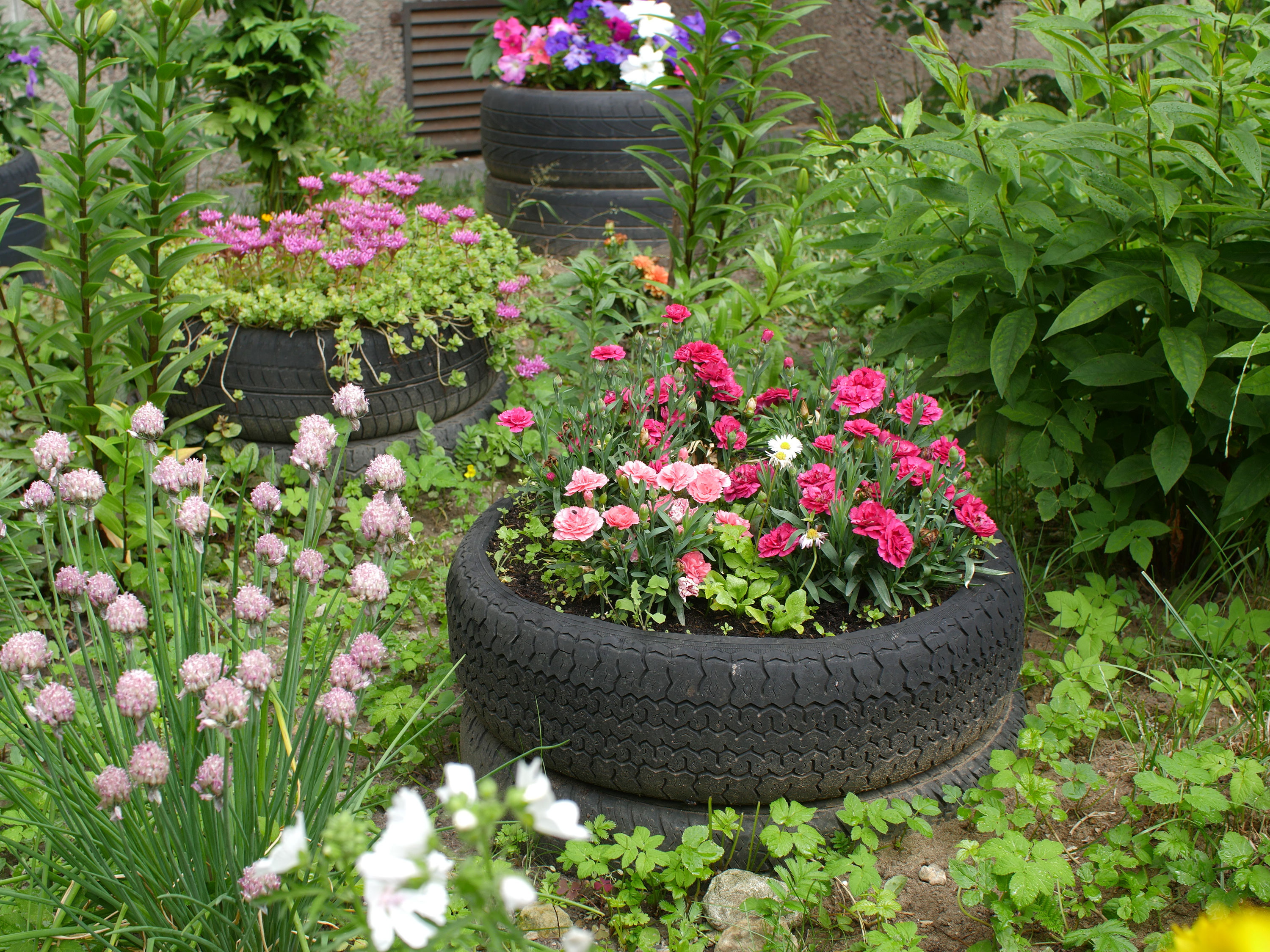
Another budget-friendly material to try is old tires, which can be recycled as modern-looking planters. You could even give them a lick of vibrant paint for an eclectic feel.
Get creative with your choice of blooms and foliage and create perfectly circular displays that can be dotted throughout your border or patio. Need a few tips to get started? Our guide on how to plant a last minute spring container is full of advice.
18. Mow a grass path
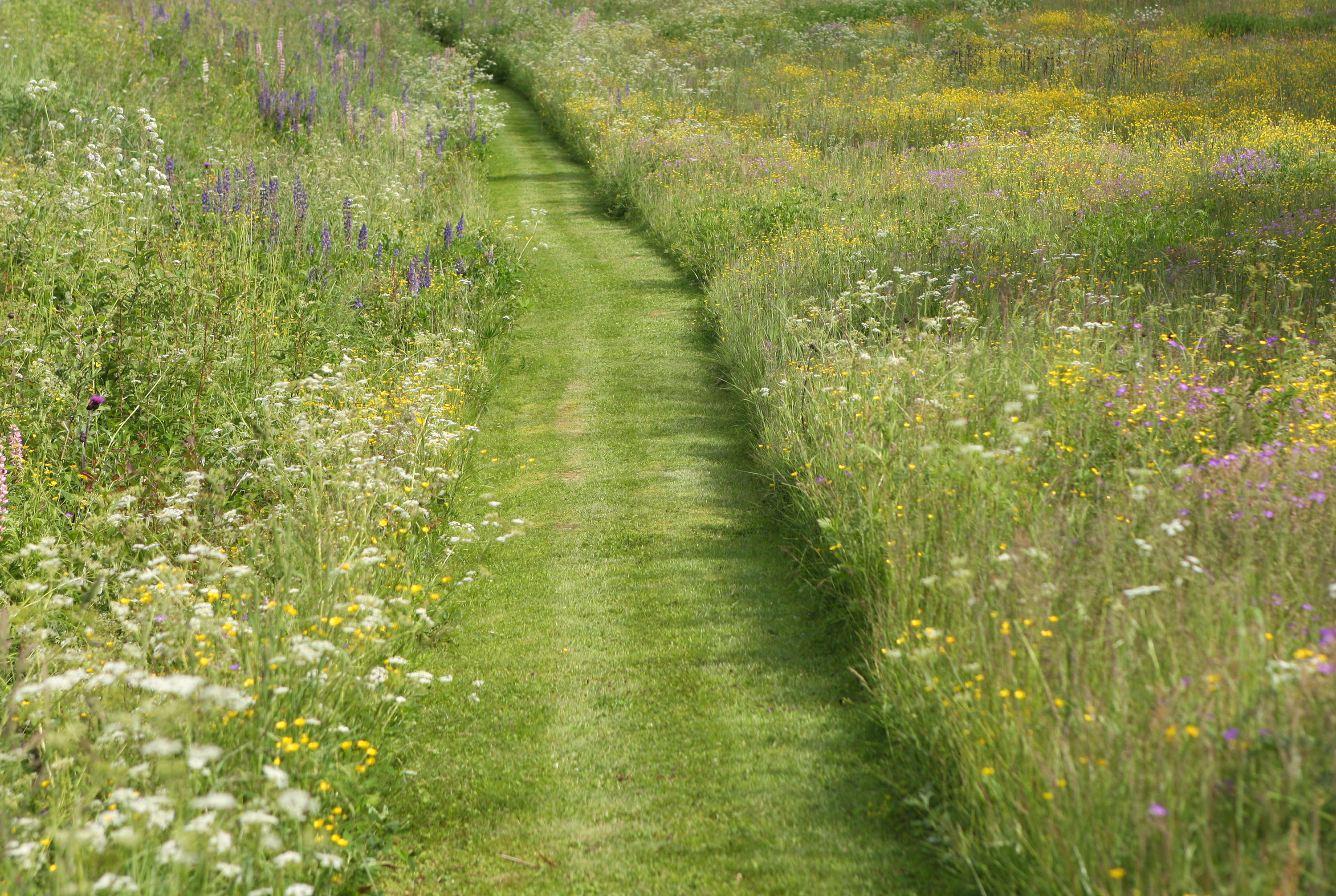
Garden paths are essential for getting from A to B, but if you're using hard landscaping materials such as paving slabs, the costs can add up.
Instead, why not opt for a more natural feel and try a grass path instead as part of your garden ideas on a budget? It will be a joy underfoot in the summer months, and is inexpensive once you've got your best lawn mower (which you might already have).
It's a perfect solution for wilder, meadow-style patches of your plot.
19. Include unusual materials for your budget garden ideas
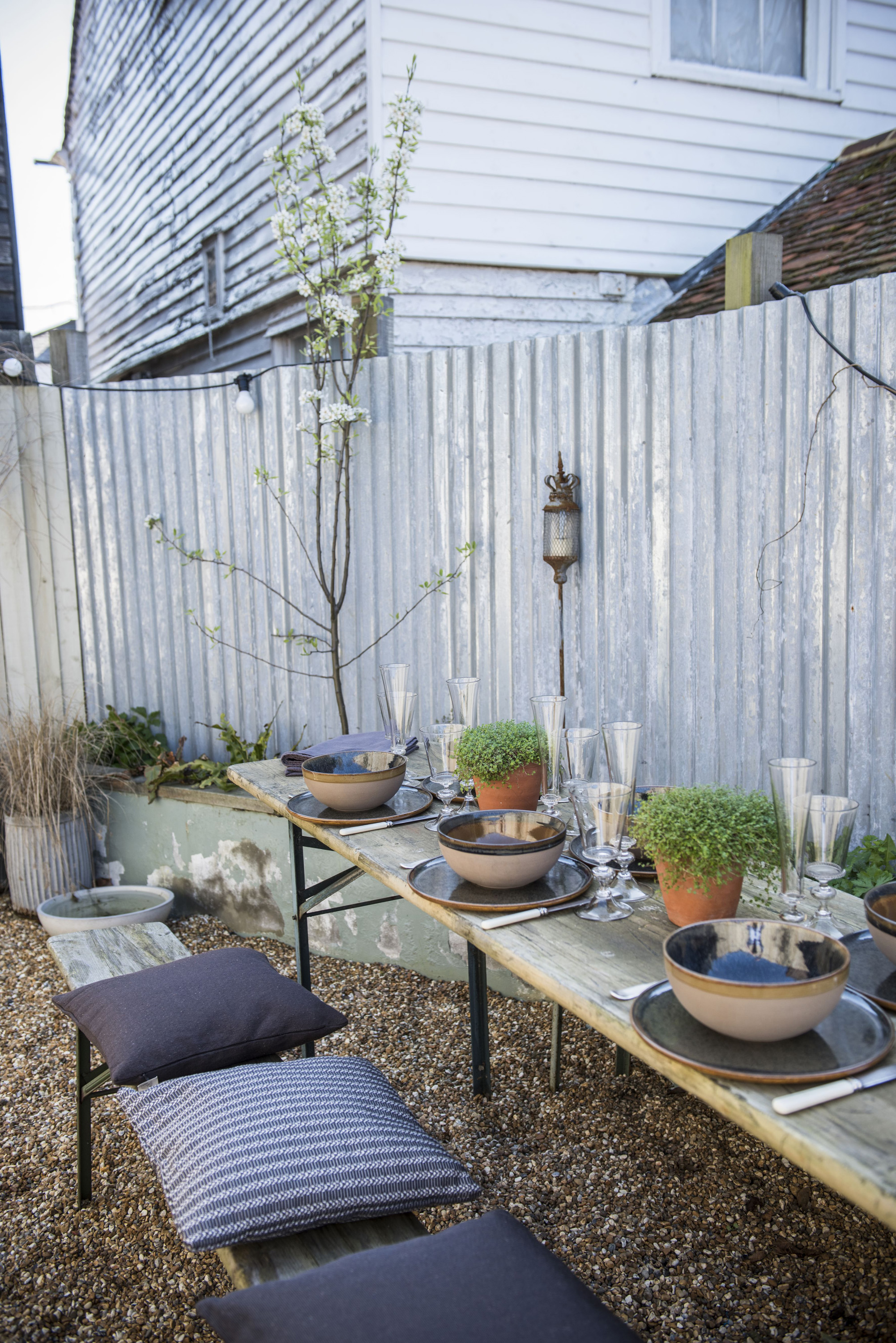
We often fall into a trap of thinking there are certain products or styles we 'must' have to complete our perfect garden. But, cheap garden ideas can allow us to explore different materials that look good and save you money.
We really like the way this corrugated iron fencing has been used to great effect in this outside space. It's a modern yet rustic alternative to traditional wooden fencing, adding character and interest to the garden.
Check out local builders' merchants and reclamation yards to bag some for your update. Or, if you're after an alternative, our cheap fence ideas feature is full of stylish yet budget-friendly styles.
20. Build a bug hotel
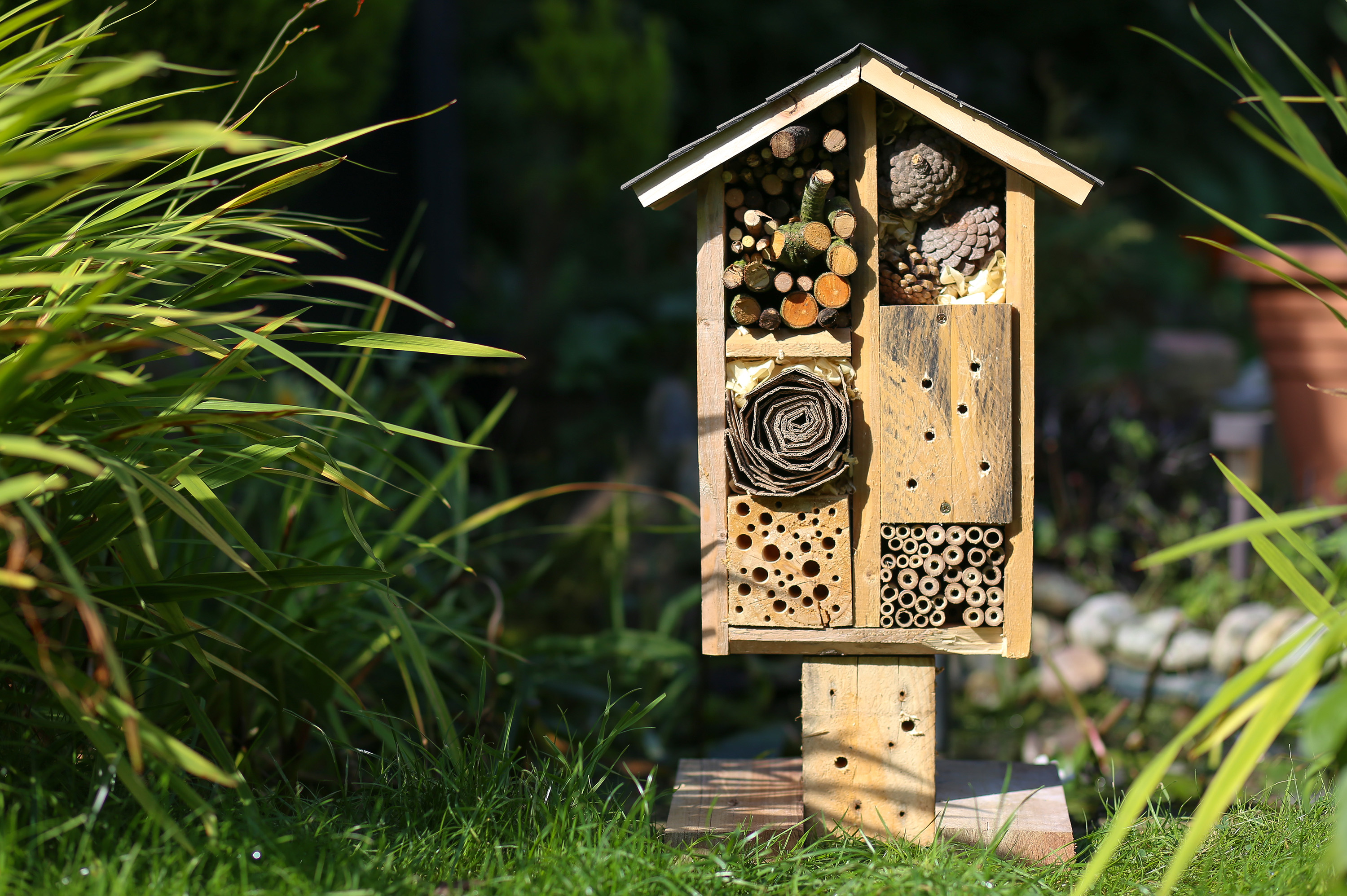
An easy way to liven up a plot is to welcome in new wildlife. So why not build a new home for them? It's a great weekend activity if you're after cheap garden ideas for all the family to do together. Plus, insects of all shapes and sizes are fun to spot for little ones.
You can use all kinds of recycled treasures to create an interesting abode. And if you spend a little more time on it, it can become an attractive feature for your plot, as well as being beneficial for the environment.
Want to have a go this weekend? Our guide on how to make a bug hotel has step-by-step advice.
21. Welcome birds to your garden
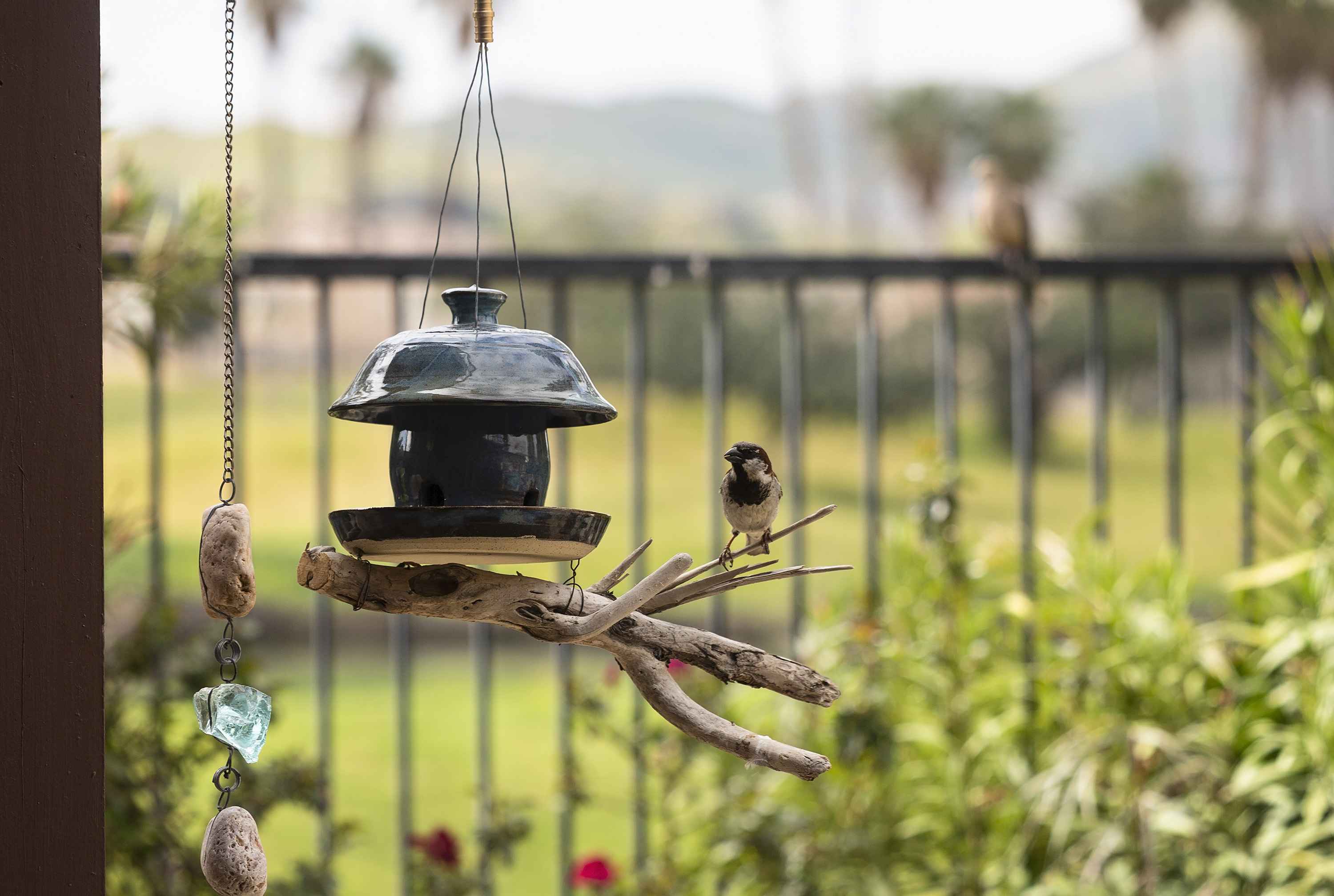
The sight of feathered friends flitting through your plot is sure to bring delight to everyone. Of course, the cheerful birdsong is a welcome bonus.
So, to instantly bring life to any garden, invest in one of our best bird feeders or two. Or why not try making your own? It's simple to do with our guide on how to make bird feeders.
22. Spruce up your plot
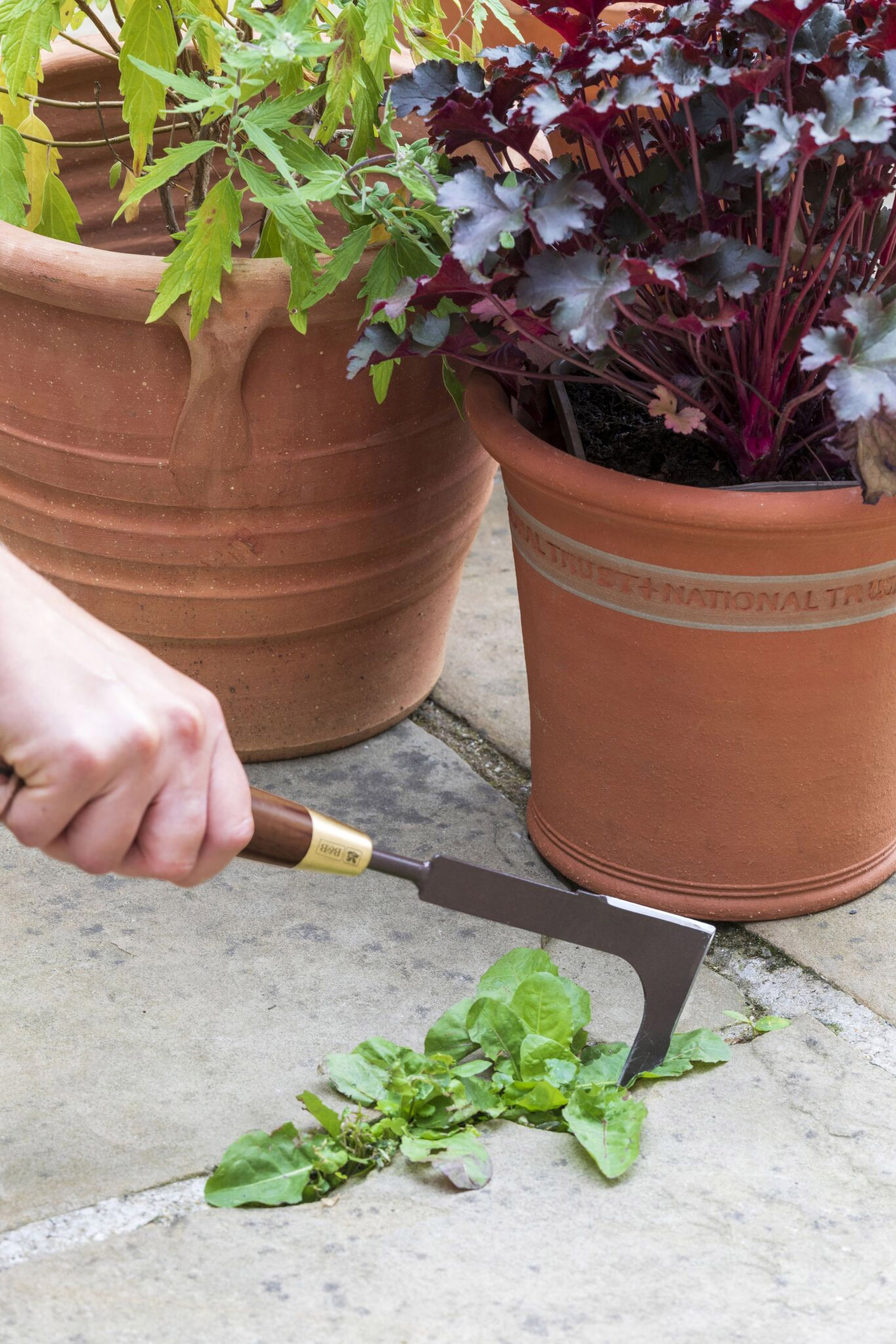
Believe it or not, a good tidy-up works wonders when it comes to giving your garden a budget update.
Whether it's an afternoon following our top tips on how to weed a garden, jet washing your patio with your best pressure washer, or clearing leaves and debris, it will make a huge difference to the overall appearance of your garden, whatever its size.
Try your best to keep on top of it all year round – after all, those weeds don't stop growing for love nor money!
23. Give your pots a refresh
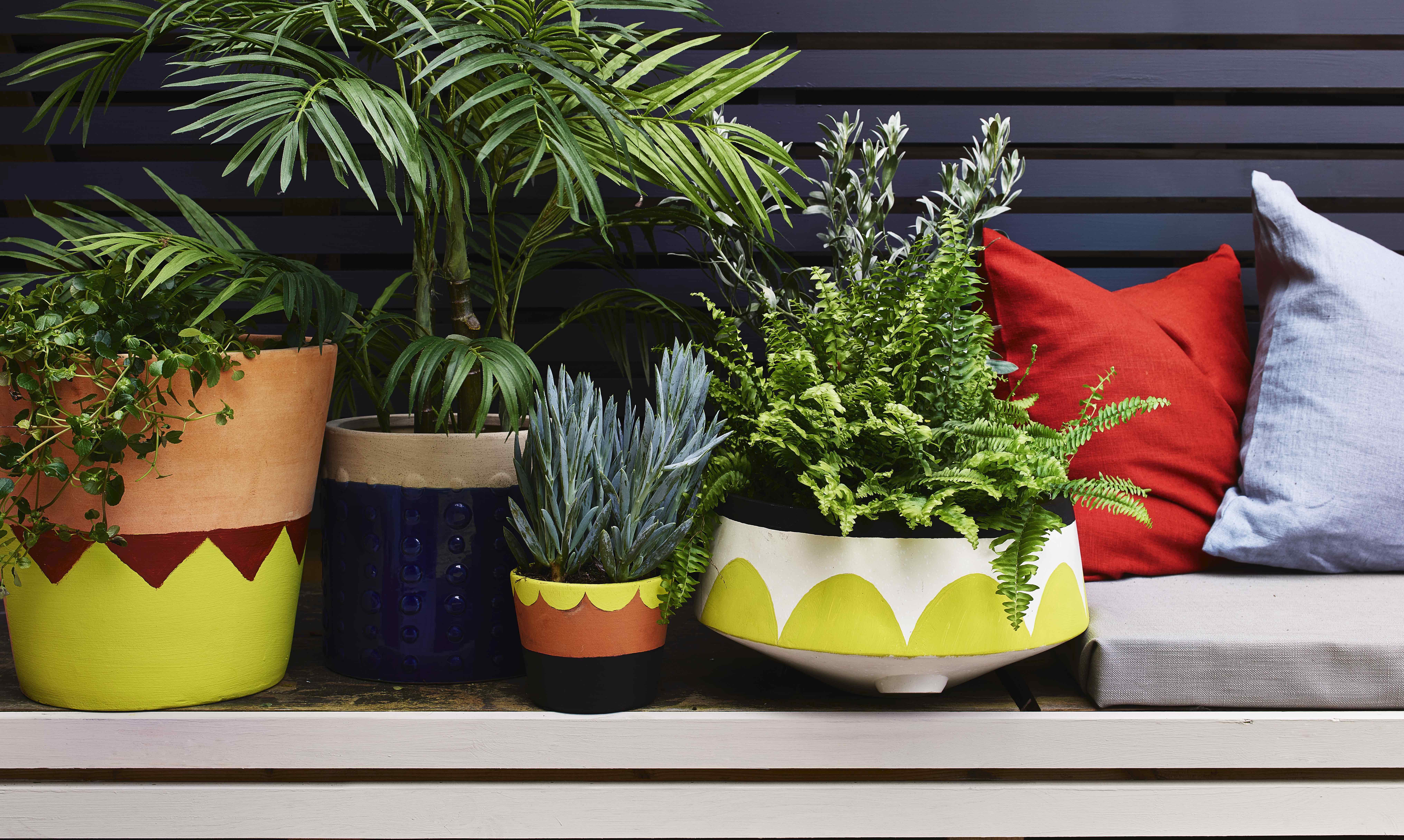
Are your favorite planters looking like they've seen better days? Instead of buying new ones, simply give your existing pots a smart and inexpensive update with a lick of paint as part of your garden ideas on a budget.
All you need to do is give them a good clean, removing any bits of baked-on soil, or slug and snail trails before you start. There are plenty of fabulous paint finishes available that allow you to paint on pretty much any surface, so you can be safe in the knowledge that your pots will look amazing when they're completed.
Our guide on how to revamp and revive your terracotta pots in just five simple steps will help you recreate the look.
24. Create your own outdoor kitchen
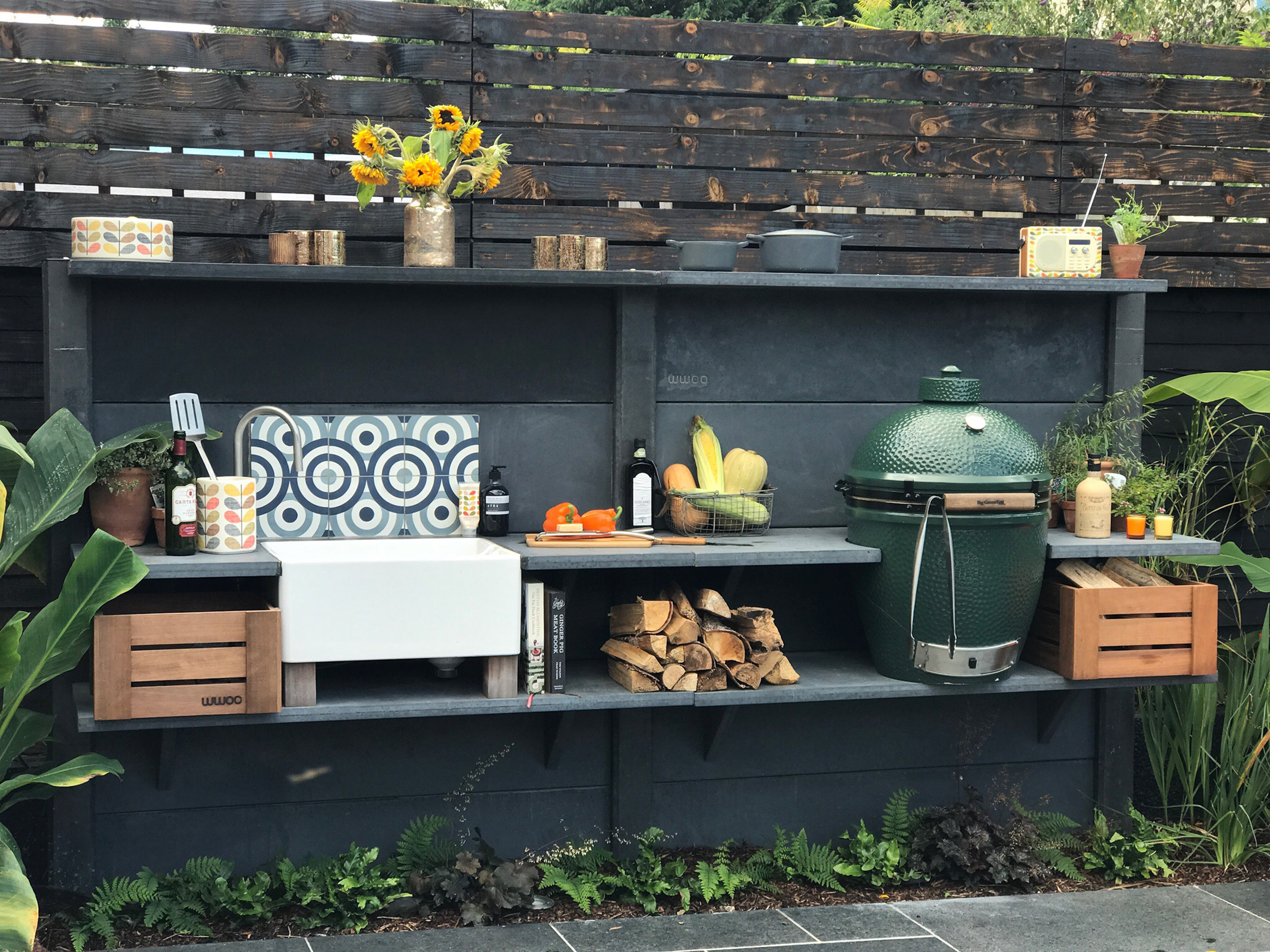
If you love alfresco dining and entertaining, why not check out how to design an outdoor kitchen area in your garden? If you're handy at DIY it can easily be done on the cheap using wooden pallets, some worktop offcuts, an old Butler's sink, and a few reclaimed buys to make a practical space.
Alternatively, if your DIY skills aren't up to the job, you could hire a carpenter to craft your outdoor kitchen ideas from the same inexpensive recycled materials and offcuts. Even taking into account the cost of the labor, it will still be a cheaper option than buying a brand-new outdoor kitchen from a specialist company.
25. Recycle and reuse
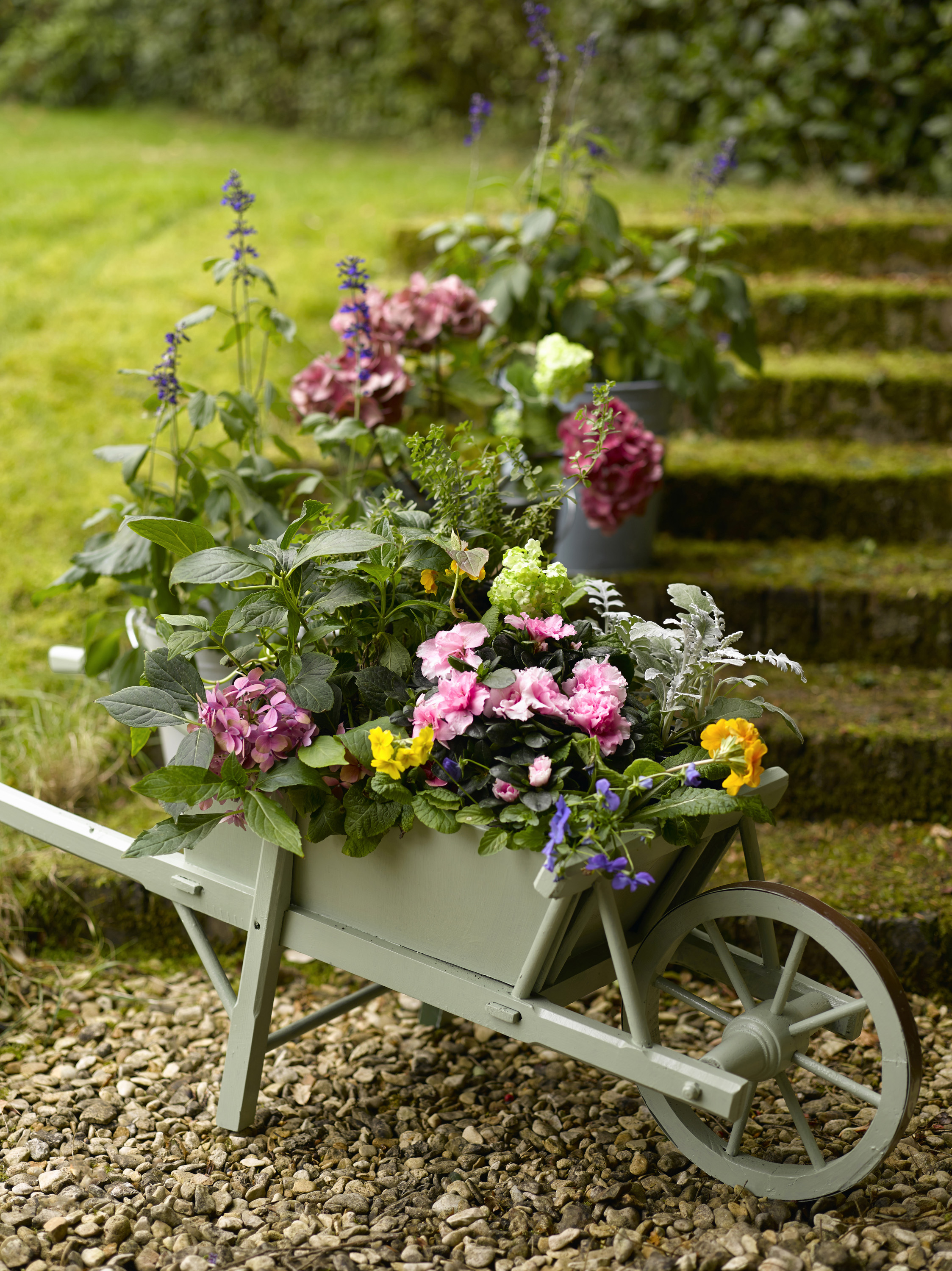
Looking for cheap garden ideas that are stylish and good for the soul? Try giving a new lease of life to a much-loved item. For instance, an old wheelbarrow might have a wonky wheel and is heavy to push, but would look amazing spruced up and planted with some beautiful blooms.
Other bits and pieces to look out for are galvanized animal feeding buckets, old tin baths, and even chimney pots – they will all look great used as unusual planters in your garden. Need more inspiration? Our feature on how to use salvage for garden upcycling ideas has plenty.
26. Save seeds
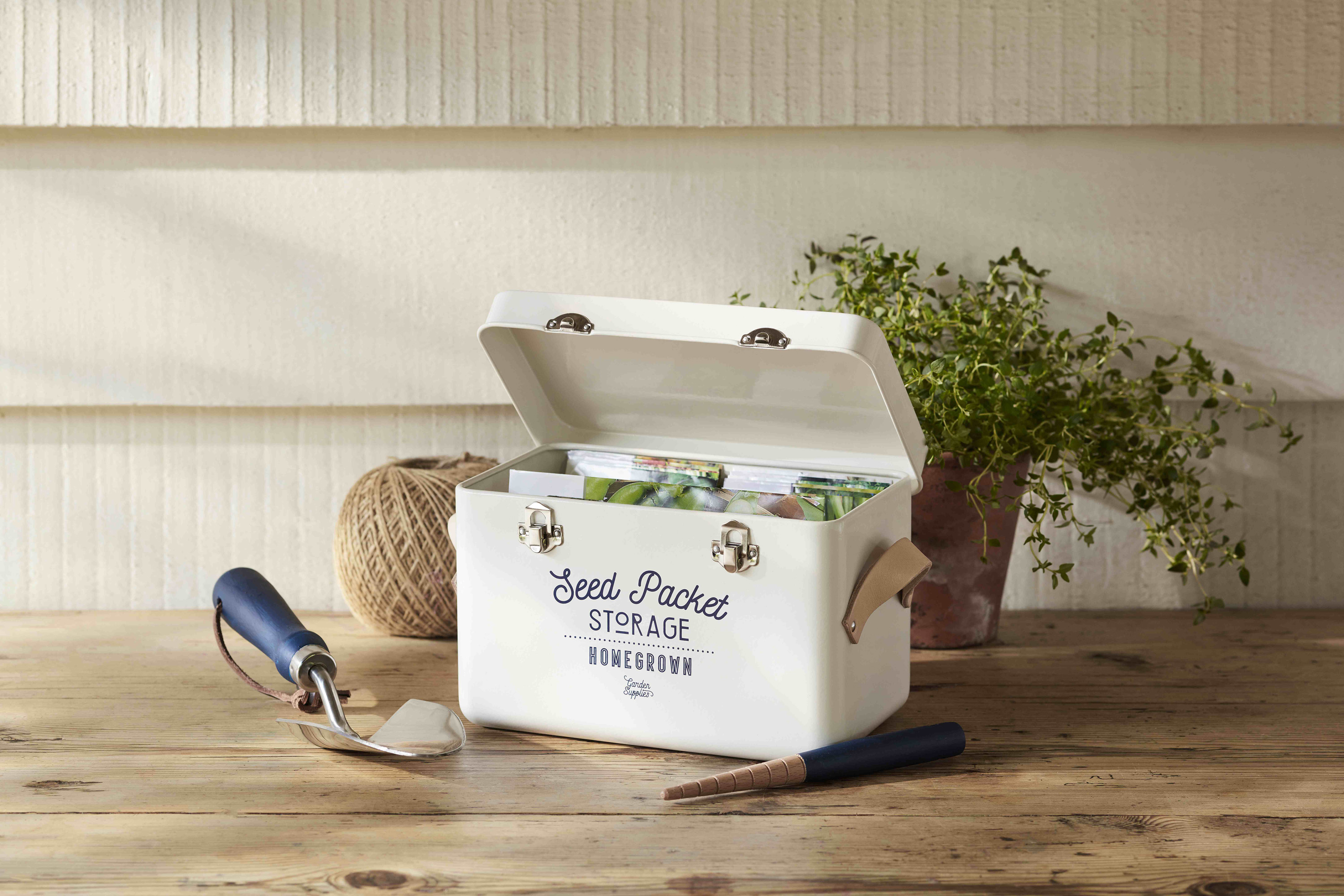
Fancy some free blooms? Collecting seeds from flowers to grow next spring is easy. Harvest on a dry day, when the seed heads have turned brown and hard. Snip them off with a set of the best secateurs and put each type in a separate, labeled envelope or bag so you don't mix them up.
Once inside, carefully shake or ease the seeds from their pods. Easy growers include nigella, pot marigold, honesty, poppy, and rose campion. Label the seeds, and store them in sealed paper envelopes in an airtight tin until you are ready to sow them.
27. Make your own compost
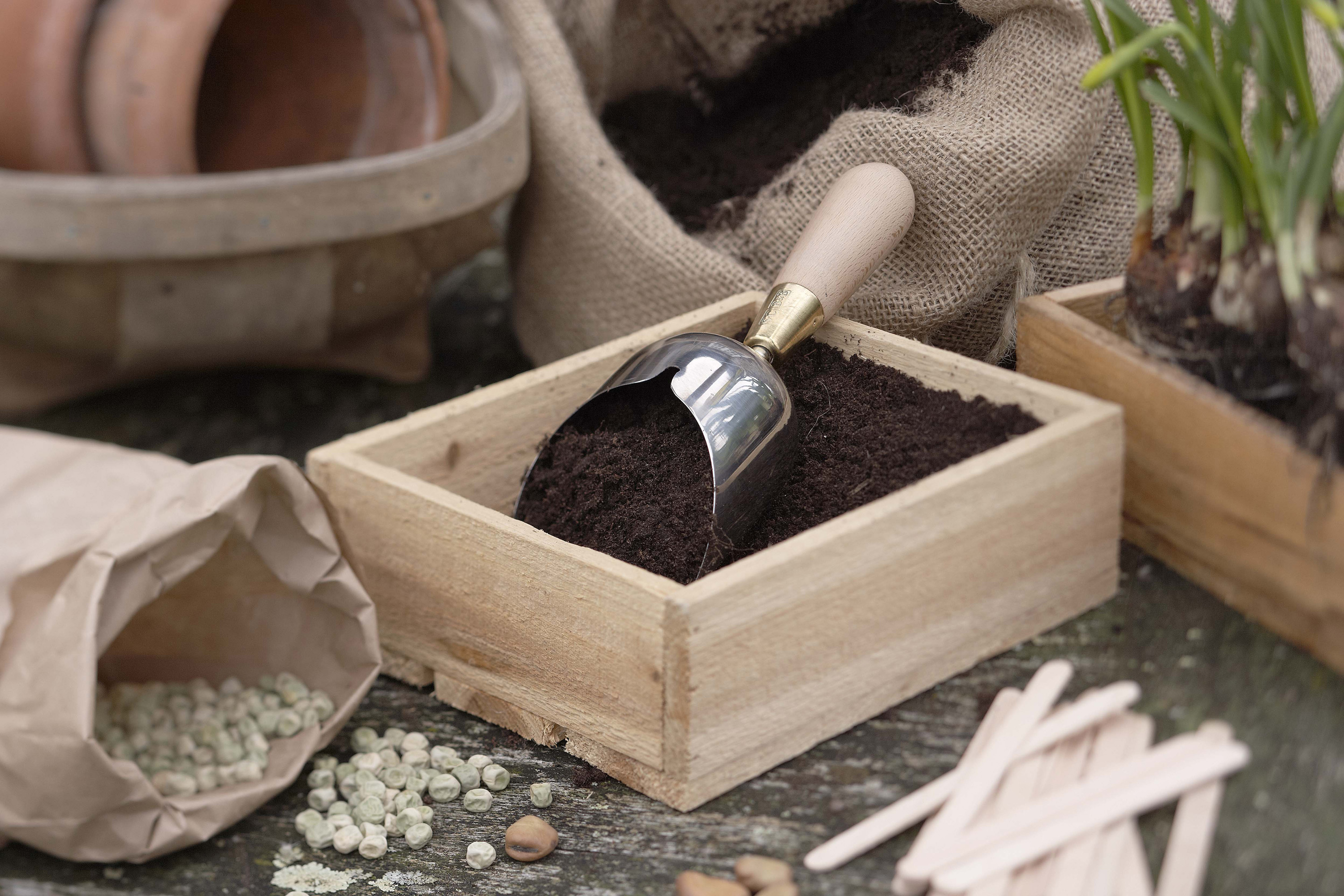
Ready-made compost mixes are convenient, but the cost soars if you have a big garden or multiple containers. Instead, turn food waste and garden clippings into free, nutrition-packed compost by following some simple rules.
Choose the best compost bin to suit the size of your garden. Position in a shady or lightly shaded spot to maintain a consistent temperature.
An earth base is ideal for a compost heap because it allows drainage, but if you site it on a hard surface, add a few spades of soil as a base layer. Use kitchen scraps but avoid cooked foods: fruit and veg peelings and crushed eggshells are ideal. Aim for 25-50 percent of soft materials, such as grass cuttings, weeds, and food waste. Mix this with woody offcuts, leaves, cardboard, and paper.
Turn the heap every month with a fork to allow air to circulate, and in six months to two years, you will get a supply of compost to dig into flower and veg beds, or rake around the base of trees.
To make potting soil for containers, blend equal parts of homemade compost with garden soil and coarse sand or grit. Our guide on how to compost has more expert tips.
28. Choose stylish salvage
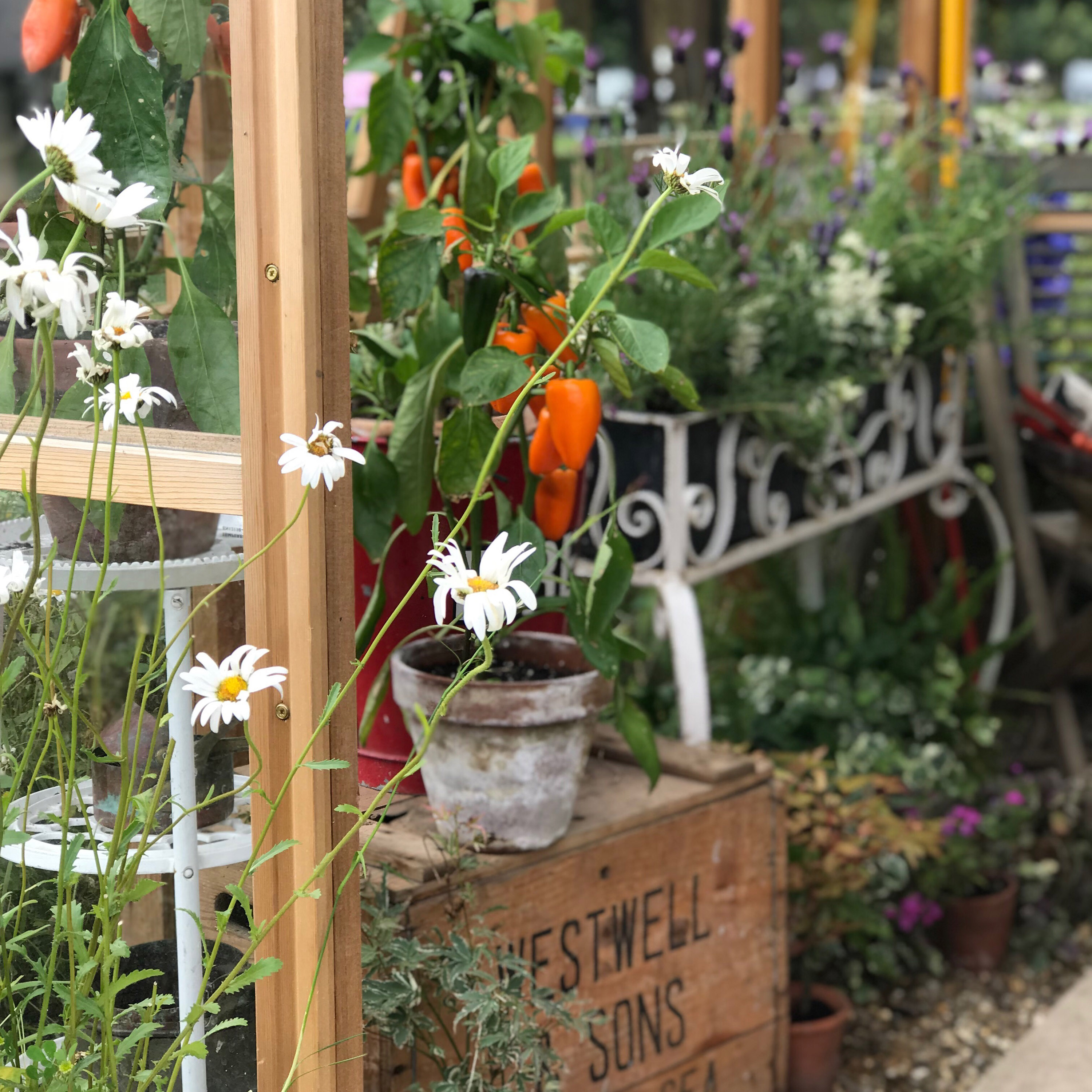
Step away from the garden center and source secondhand and vintage accessories instead as part of your cheap garden ideas. Old wooden crates make striking shelving for pots when stacked on top of one another. Create a focal point with an old milk churn or a step ladder which makes an effective pot 'theatre'. Ceramic sinks are ideal planters if you want to learn how to grow succulents, herbs, or alpines.
Check Facebook Marketplace, eBay, or Gumtree for old zinc baths and tubs which make rust-free planters. Keep an eye on skips for interesting ironwork or discarded terracotta pots, but do ask the owner before removing anything.
29. Go rustic and reuse garden waste
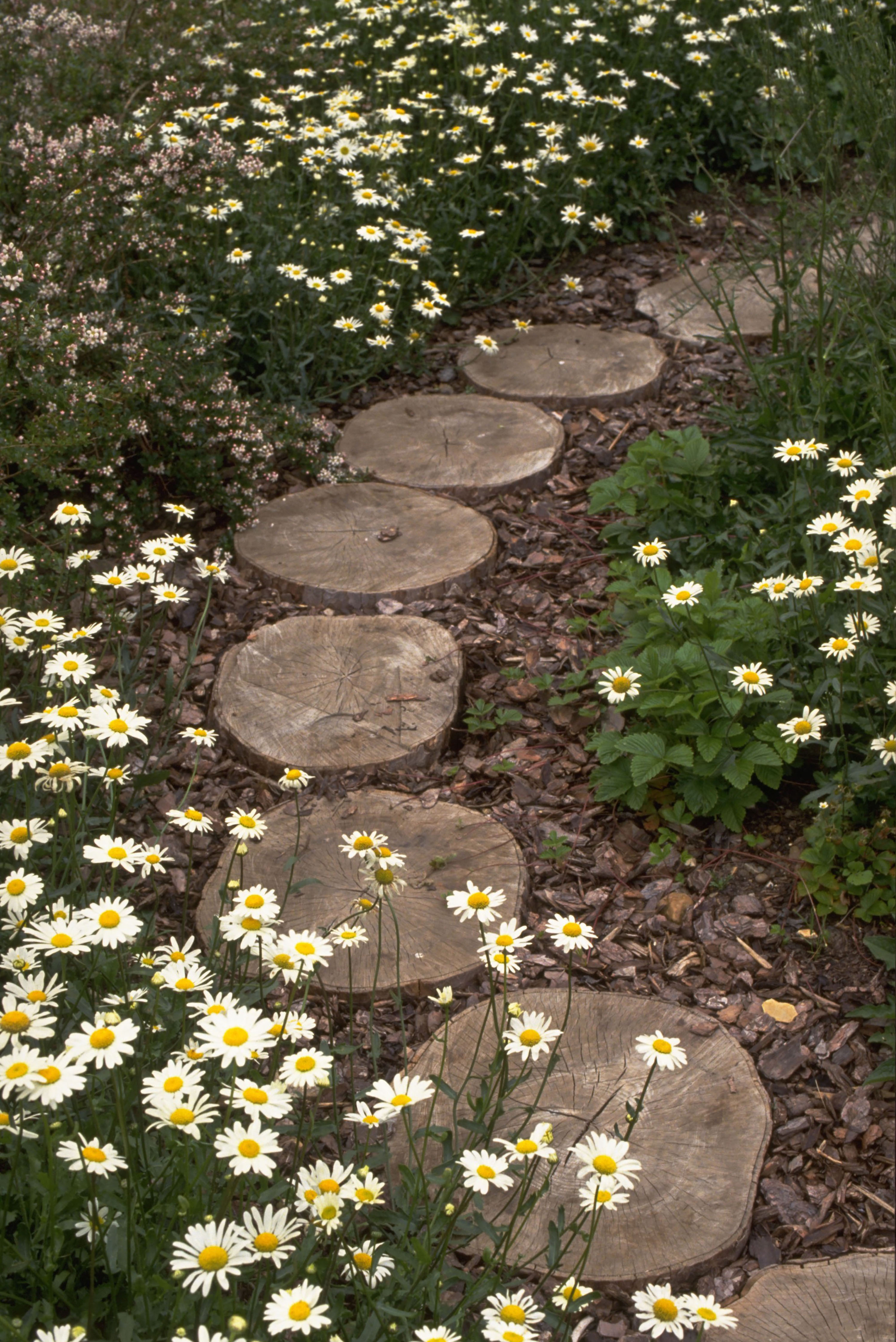
If you're cutting back bushes or trees in your garden, check to see if you can reuse any of your offcuts before condemning them to the brown bin or compost heap.
For cheap garden ideas that are functional and stylish, save skinny, straight branches and reinvent them as cane wigwams for sweet peas or climbing beans. Tree trunk slices can be used for garden path ideas as they make an attractive stepping stone design.
Meanwhile, stumps can be repurposed into rustic stools to place around the best fire pits. Clustered together, they can also be used to display pots at varying heights. Take a look at our tree stump ideas for more creative uses.
30. Take cuttings from your plants
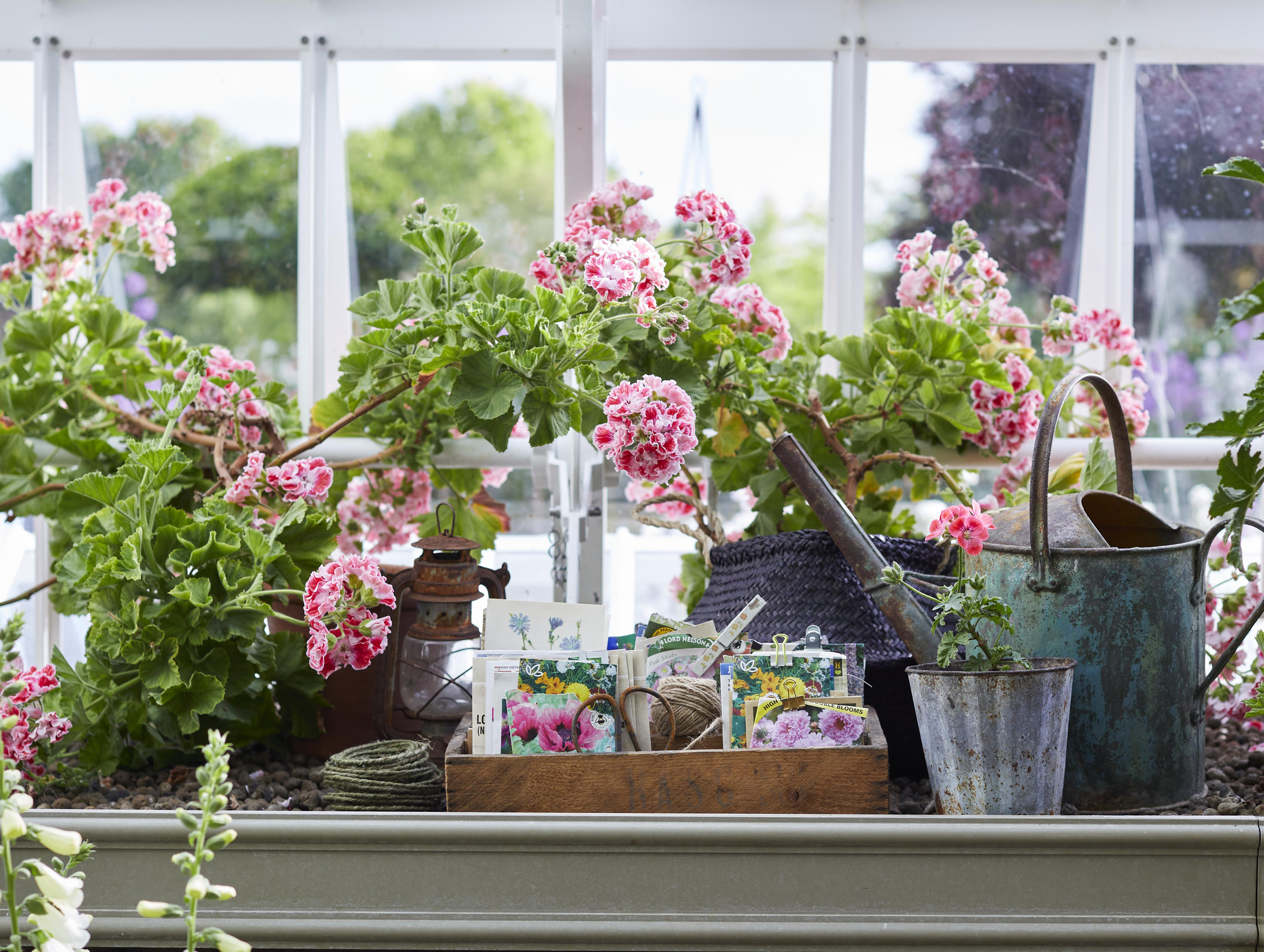
You don't need to be a seasoned gardener to learn how to take cuttings from plants. It's a simple way of duplicating favorite flowers and you can expect a high success rate. Popular plants such as penstemons, salvias, fuchsias, and pelargoniums can be propagated in fall.
Choose a non-flowering shoot, as these sprout roots more quickly. Cut to about 4in (10cm) long. Make the incision below a leaf node (the point where the leaf is attached to the stem). Remove the side leaves and the soft growing tip.
Fill a pot with potting compost mixed with horticultural grit or Perlite (both widely available at garden centers). Push the cuttings into the soil around the sides of the pot. Place in a warm, light spot, out of direct sunlight. A plastic bag or cling film over the top will create a moist atmosphere which boosts the cuttings' growth.
31. Source cut-price plants
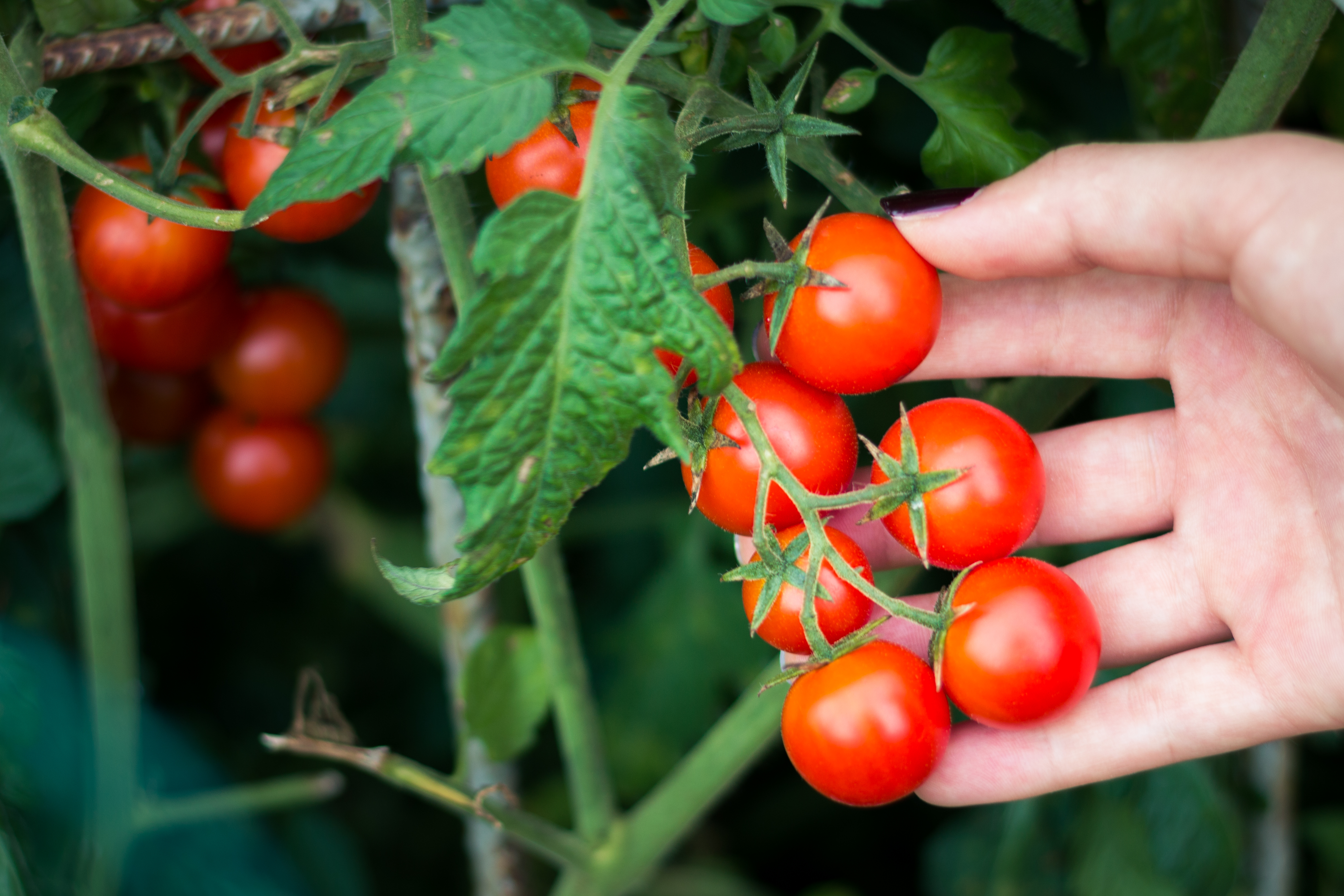
Sunday morning car boot sales and open garden events are the cheapest places to acquire new plants, as seasoned growers with surplus stock often offload there. If you're thinking of learning how to grow tomatoes or other veg, this is a great place to start.
You can pick up veg plants, succulents, and perennials at prices that are well below that of a nursery or garden center. Go prepared with your own bags, and take cash. Buying locally means that you're likely to be purchasing plants that will thrive in the same soil as your own garden.
32. Go for gravel
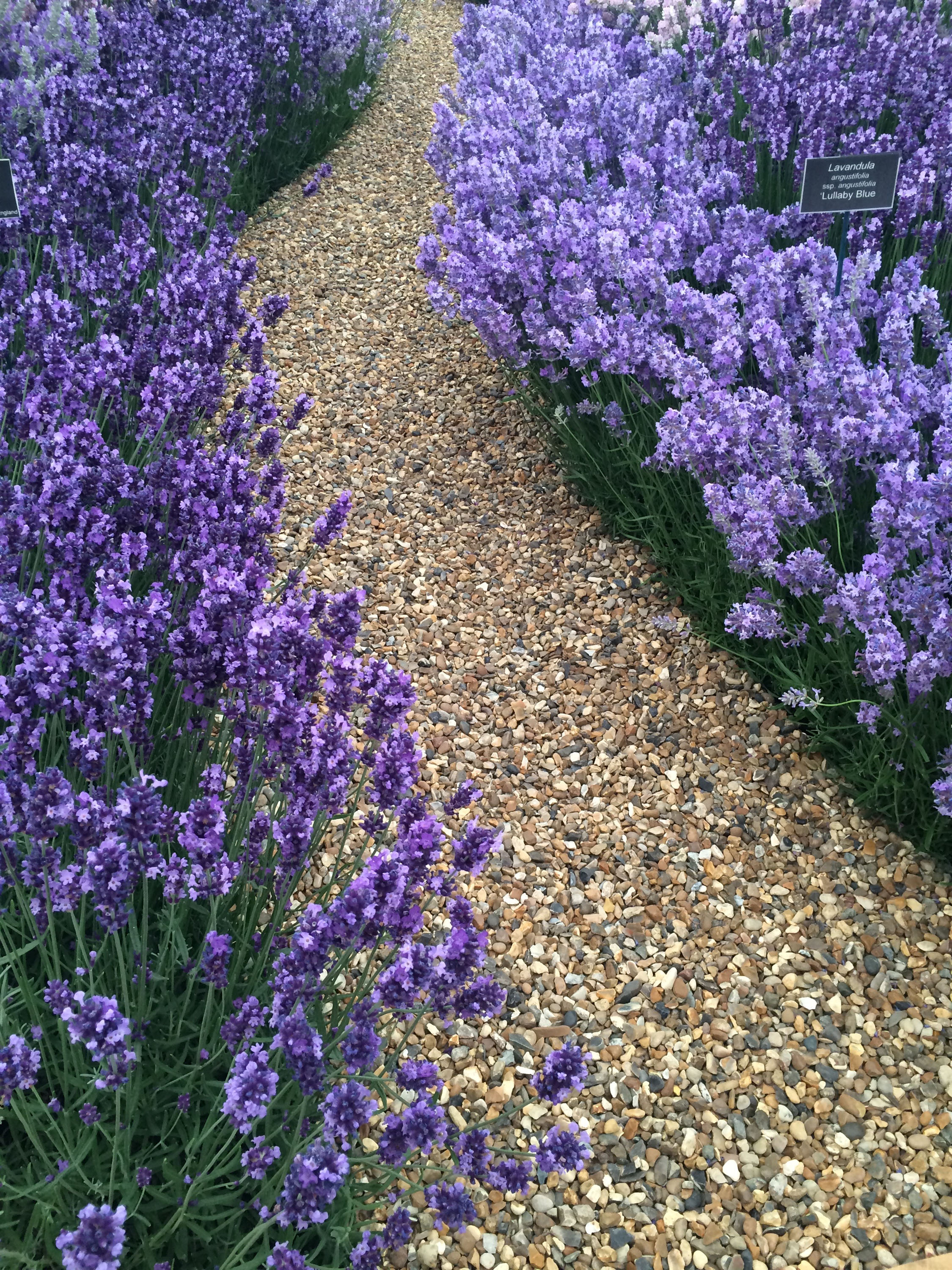
Making new paths can create interest in a garden, leading the eye from one area to another and helping to create structure. When thinking about cheap garden ideas, remember that one of the least expensive materials for paths is gravel, rather than slabs or stones.
Mark out the area that you want to cover and remove any loose grass and soil. Take a permeable membrane, available from DIY stores, and pin it to the route of the path. This will stop weeds from growing up through the stones. Spread the gravel at a depth of around 1in (2.5cm). Choose small pebbles (up to 0.6in or around 16mm) as they are more comfortable to walk on, and then rake for a smooth surface.
Want to try your hand at more DIY landscaping ideas? Our step-by-step guide on how to lay a patio is a great one to get you started.
33. Buy bulbs for spring cheer
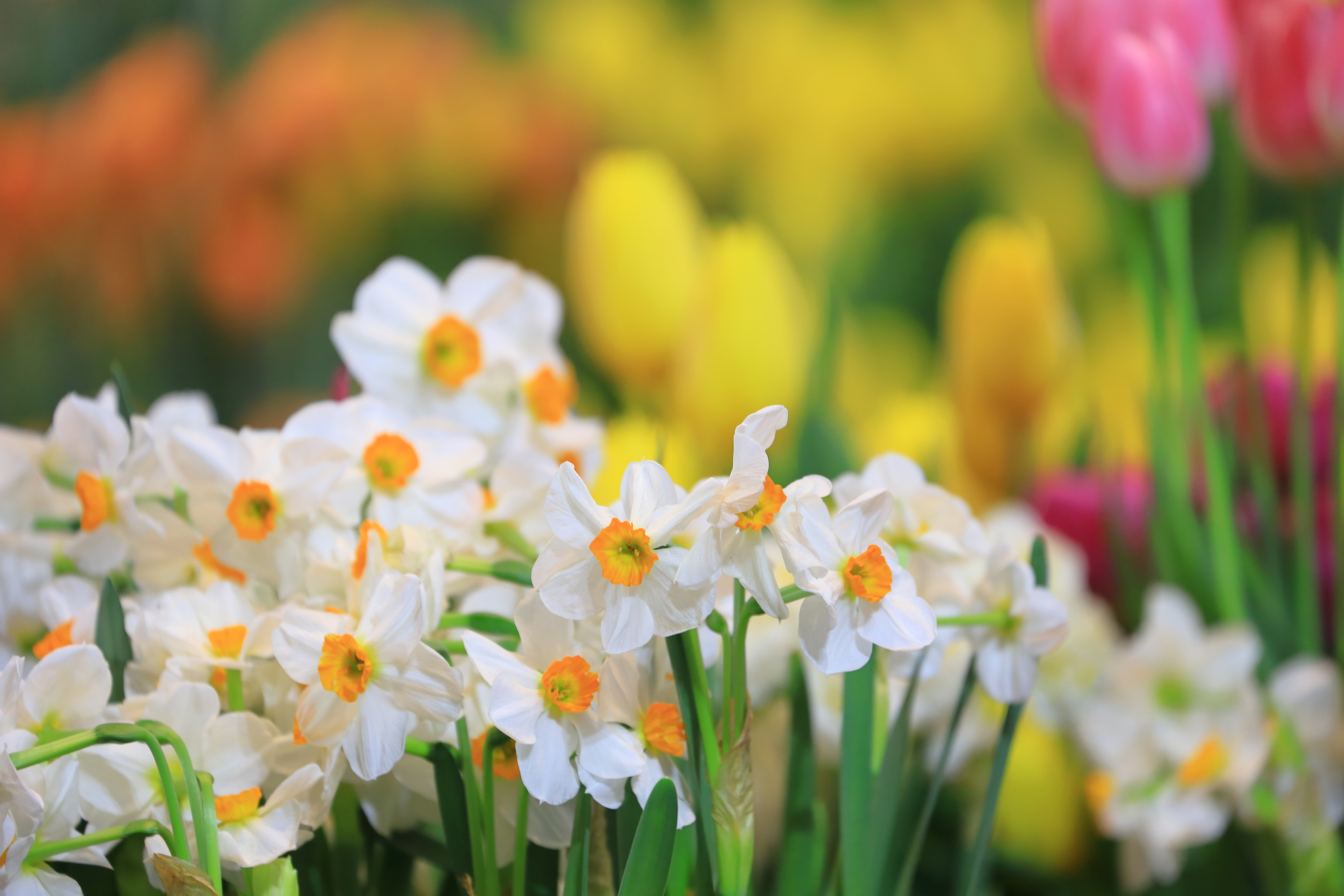
Flowers are thin on the ground in late winter. Planting bulbs will bring a mass of early color with a low price tag. So, as part of your cheap garden ideas, buy multi-packs in early autumn. Choose bulbs that feel plump and firm, and set aside an afternoon to plant up borders and containers.
Plant daffodils, crocuses, and hyacinths by the end of September, lilies, alliums, and crocosmia in September/October, and tulips in November. You can find out innovative ideas for how to plant daffodil bulbs in our guide.
Plant the bulbs two to three times their own depth, two bulb-widths apart, with the pointy side upwards. If you're putting bulbs in pots, mix the soil with a handful of horticultural grit, and water well after planting.
Prevent squirrels and mice from uprooting them by putting chicken wire over the top of pots (remove when they start to sprout).
34. Invest in perennials and divide them up
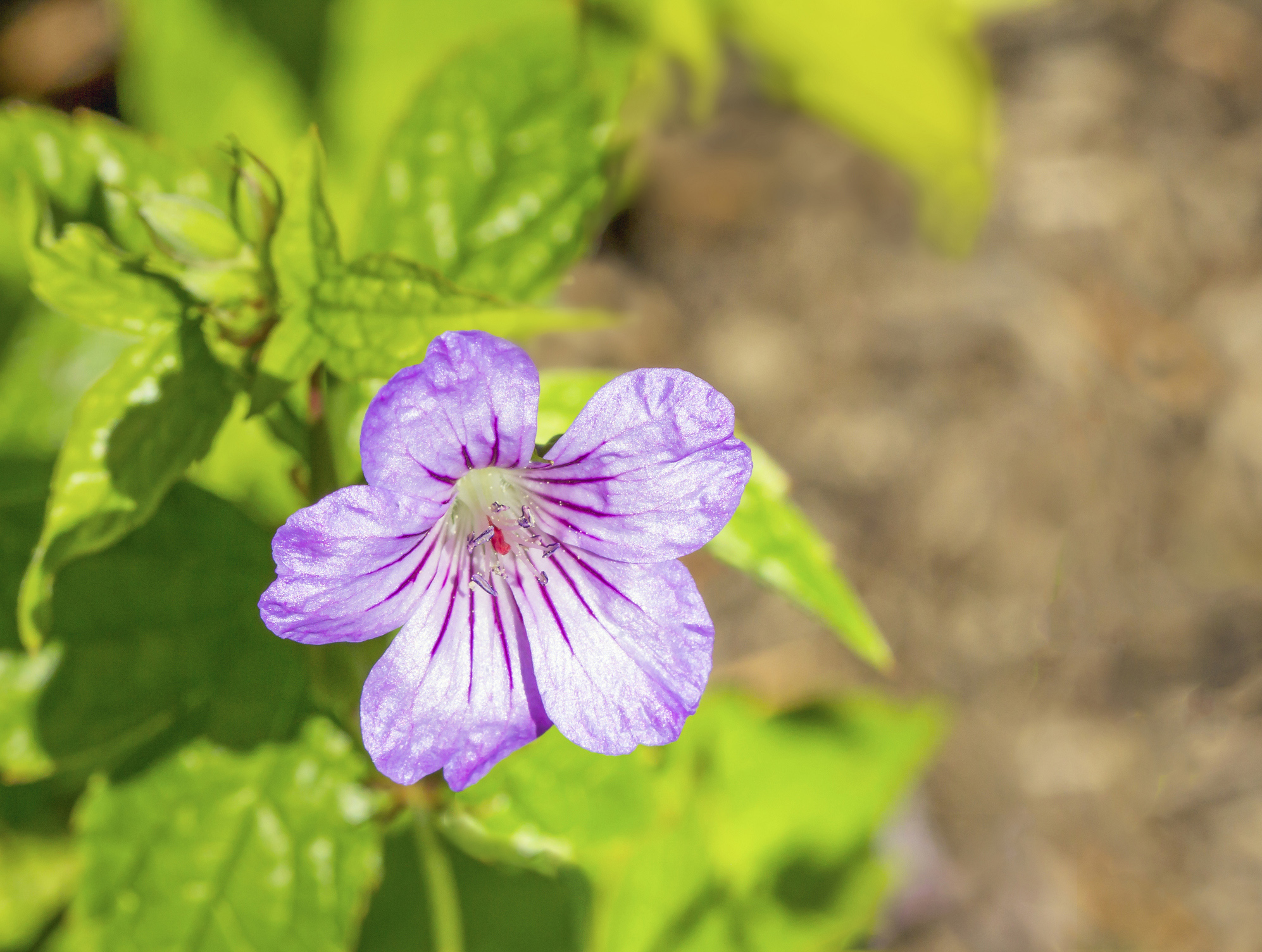
Perennials, or plants that come back every year, are a thriftier choice than bedding plants or annuals which need to be bought and replaced each spring. Perennials can be split and replanted so you buy one – and get three. Geums, astrantias, and hardy geraniums all work well using this method.
Take the plant out of the pot you bought it in and carefully pull it into three parts, gently teasing apart the roots. Dig one hole for each plant, firm them in, and water well. The following year when they have spread, you can divide them up again.
35. Brave bare roots to make hedges
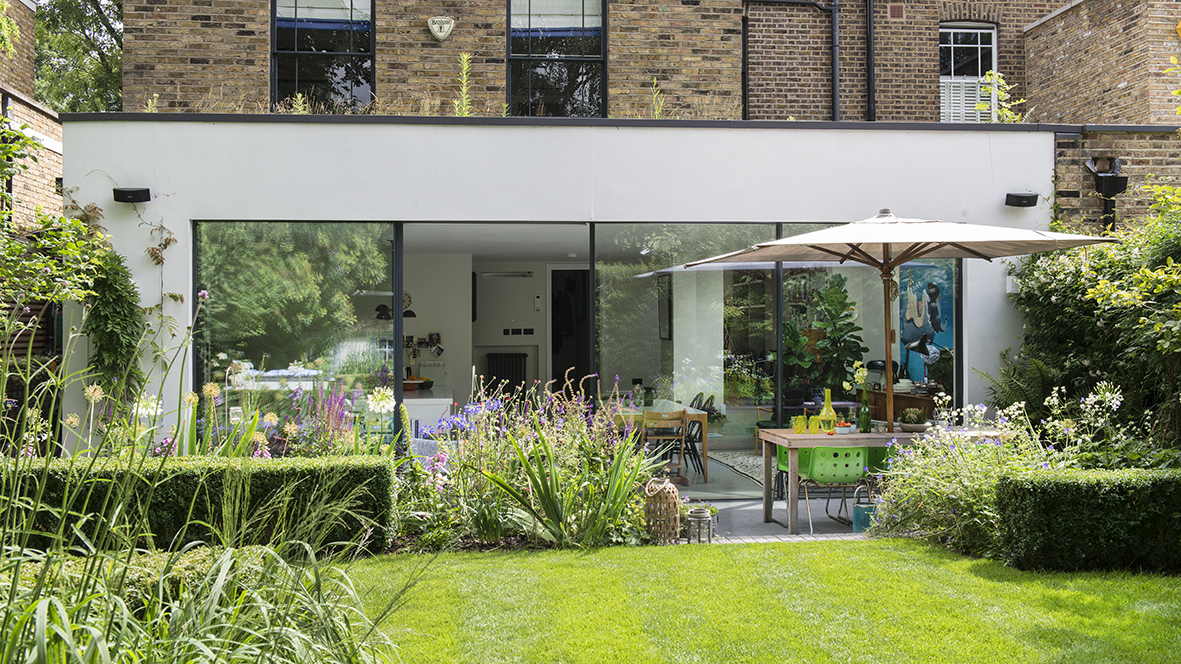
Buying enough plants to create one of the best fast growing hedges can command a high price, but if you're after cheap garden ideas, there is a more budget-friendly way. Opt for bare root plants, rather than larger, ready-grown leafy specimens, and plant them in late fall. Your hedge will start taking shape in the spring.
Beech, laurel, hawthorn, box, and privet can all be bought in this way. Bare root plants can look off-putting because they often don't have any leaves, but this is only because the plant is dormant. Once the hedge has been planted, fed, and watered, it will start to sprout in the growing season.
Try online specialist nurseries for the best deals. Many offer a pre-ordering service.
36. Opt for budget-friendly lighting solutions
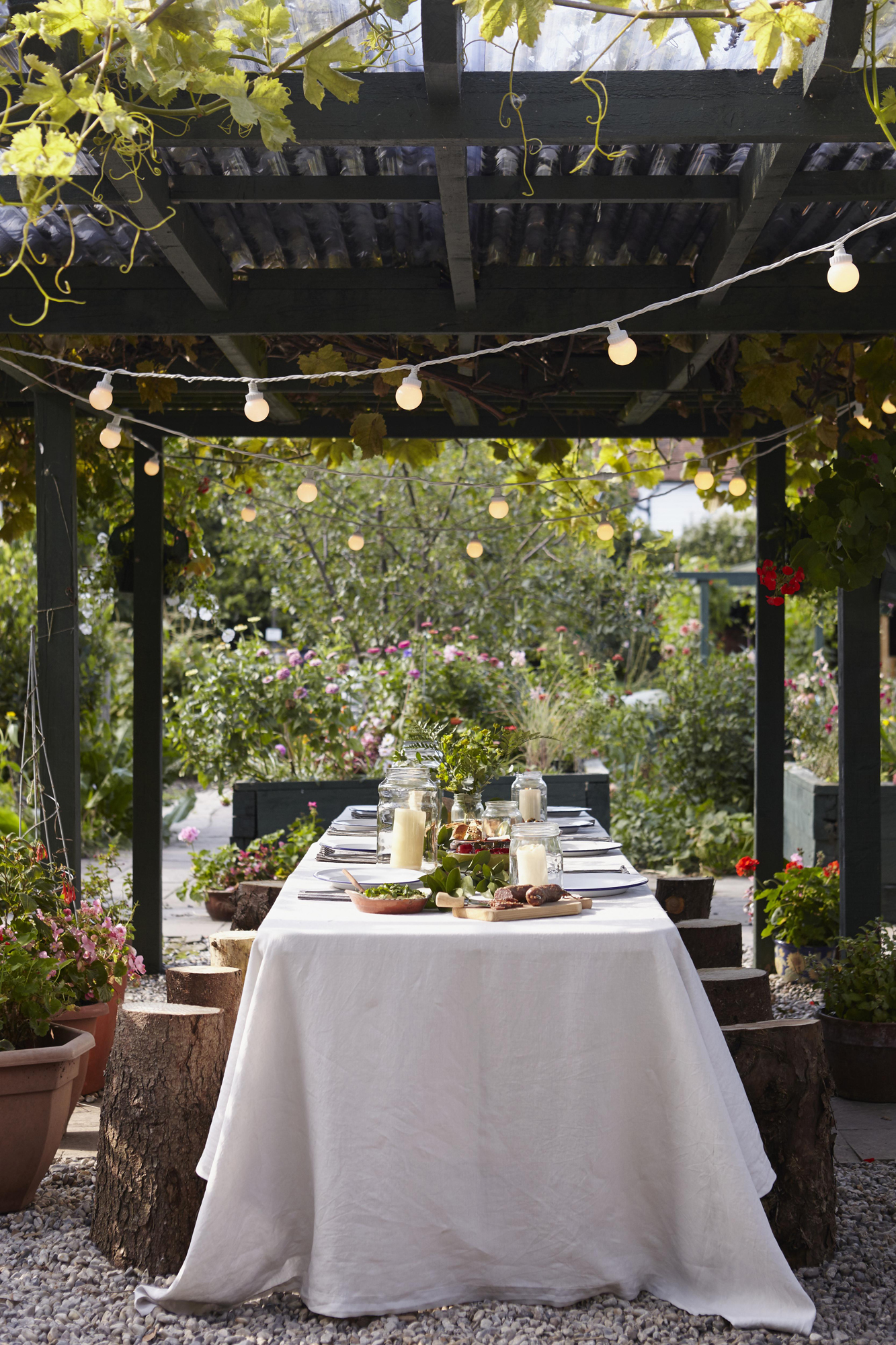
A softly lit patio or terrace transforms a garden when the sun goes down. Permanent garden lighting ideas look fabulous but it can be pricey to get it professionally installed. Try the best solar lights and battery options instead as part of your cheap garden ideas. Aim for lighting on different levels. Twist battery operated or solar lights around a tree trunk, or thread them through the branches of a tree.
Floor standing battery lanterns will offer subtle uplighting, while solar-powered stake lights pushed into the ground highlight a statement plant. Look for solar lights with an amorphous panel, rather than a crystalline one, as they have a higher rate of light absorption and a more reliable beam.
For after-dark dining, suspend battery-operated festoon lights from a pergola, and add some candles to the table.
37. Add an affordable feature
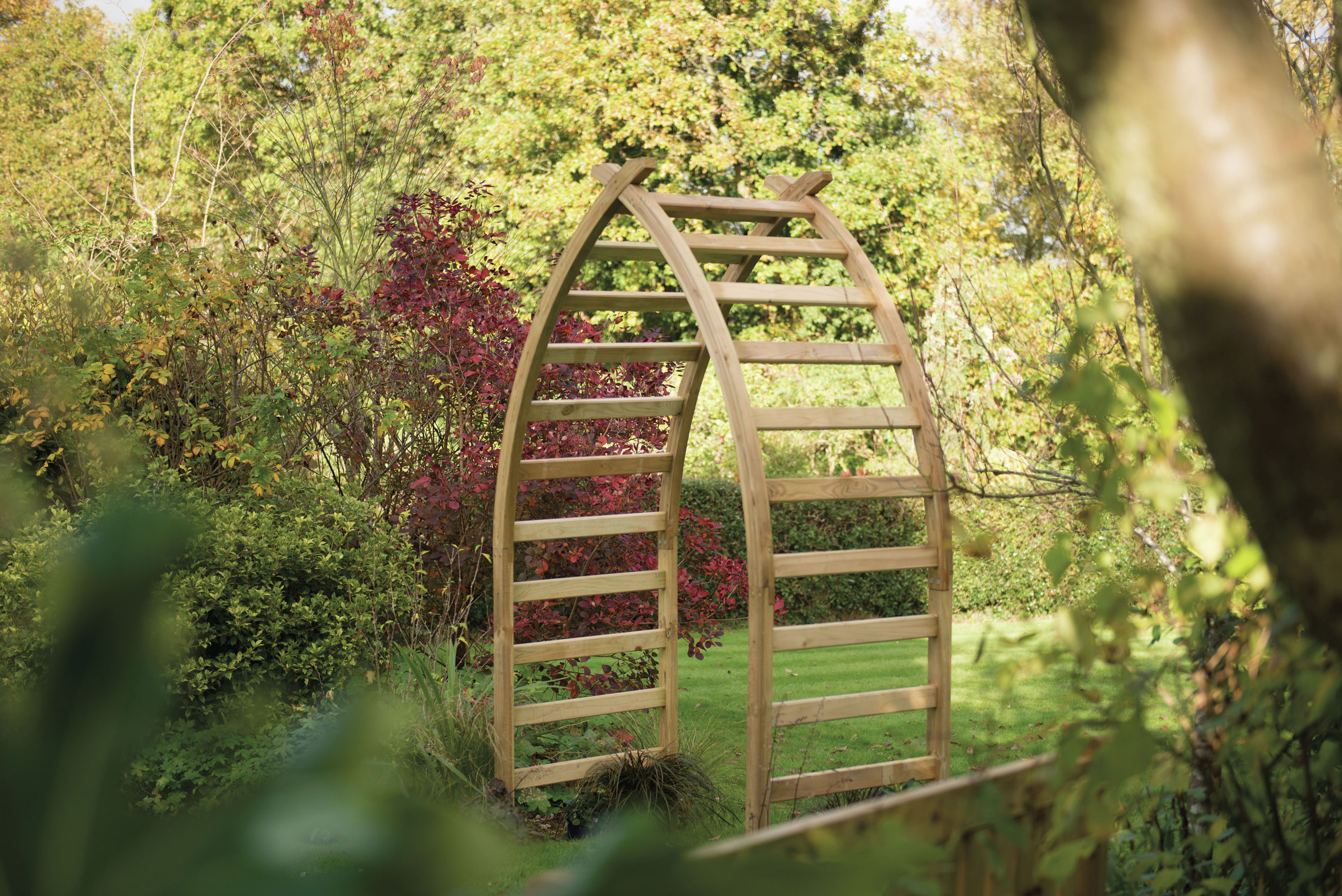
Choose one large striking feature to make a centerpiece in your garden. A wooden arch makes a splash for a modest sum. Opt for a DIY style that you can put together yourself and add color with the best exterior wood paint.
Find out how to grow clematis or other fast climbers such as a rambling rose to adorn it, or leave it plain and simple for a more modern look. Either way, it's a lovely addition to your cheap garden ideas.
38. Update fences with paint
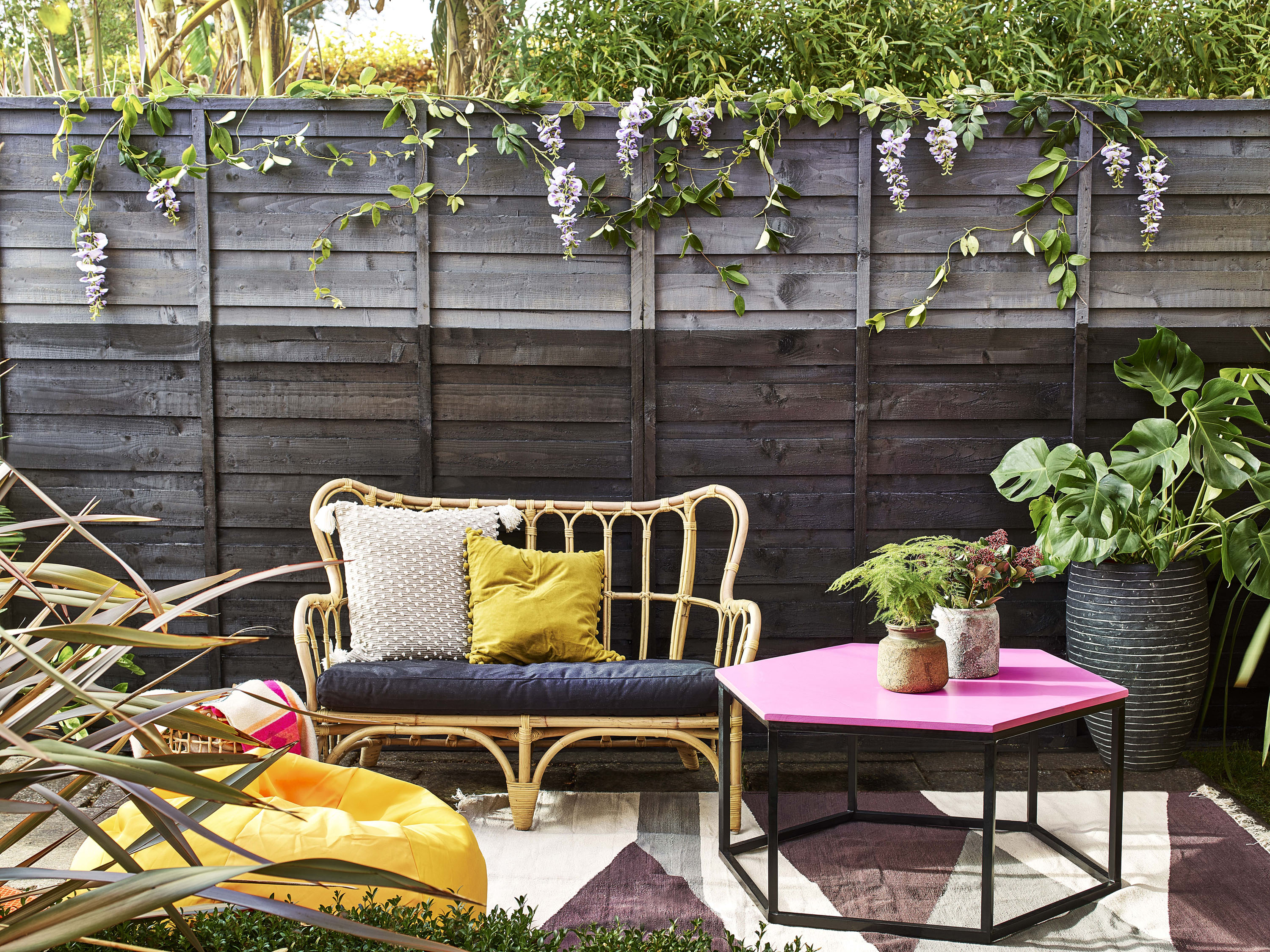
One of the easiest budget garden ideas is to transform a tatty plot with a pot of paint. Use it to give your garden fence ideas a lift.
Dark colors, such as Cuprinol’s 'Urban Slate' or 'Black Ash', will make plant foliage pop. An off-white shade creates a modern country look.
Prepare surfaces by brushing away any debris or dust. Apply a couple of coats.
39. Make a DIY pond
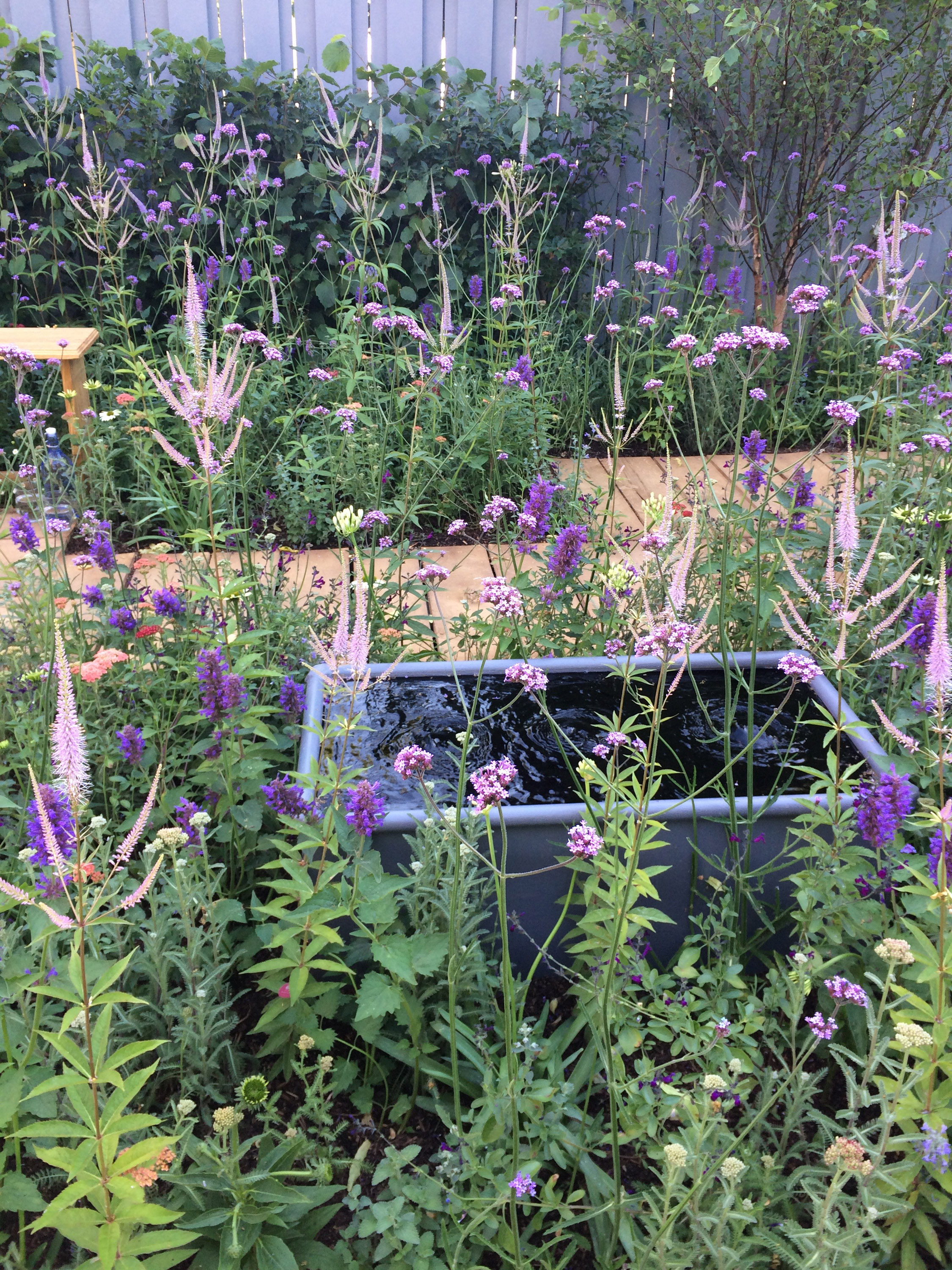
Add an affordable water feature by finding out how to build a garden pond. Use a half barrel, trough, or a plastic tray – a wider vessel is best. Put the container in an area that gets sun and shade and cover the bottom with gravel, then fill it with rainwater.
Add a selection of bog or pond plants. Ensure that any pond creatures can get in and out of the water by adding some stepping stones. Old bricks or big stones will work.
40. Choose great-value flooring
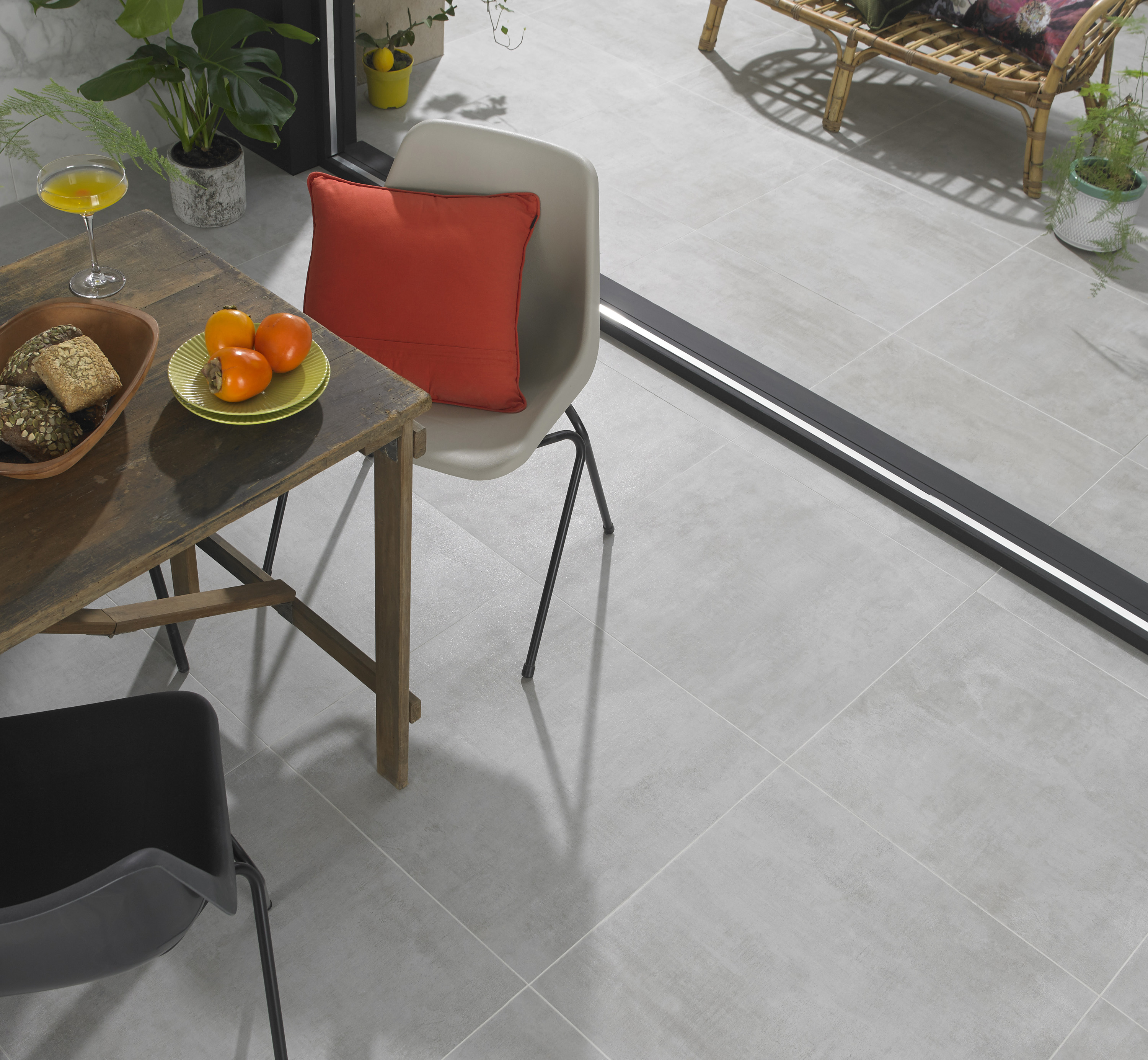
Not everyone loves decking, so why not try the latest paving ideas instead?
It's not always as pricey as you might think. And, there are lots of designs that are made from stone- or even wood-effect materials that look like the real deal for a fraction of the price.
Want to save even more money? Learn how to lay a patio and you can take on the task yourself.
41. Use pallets to make furniture
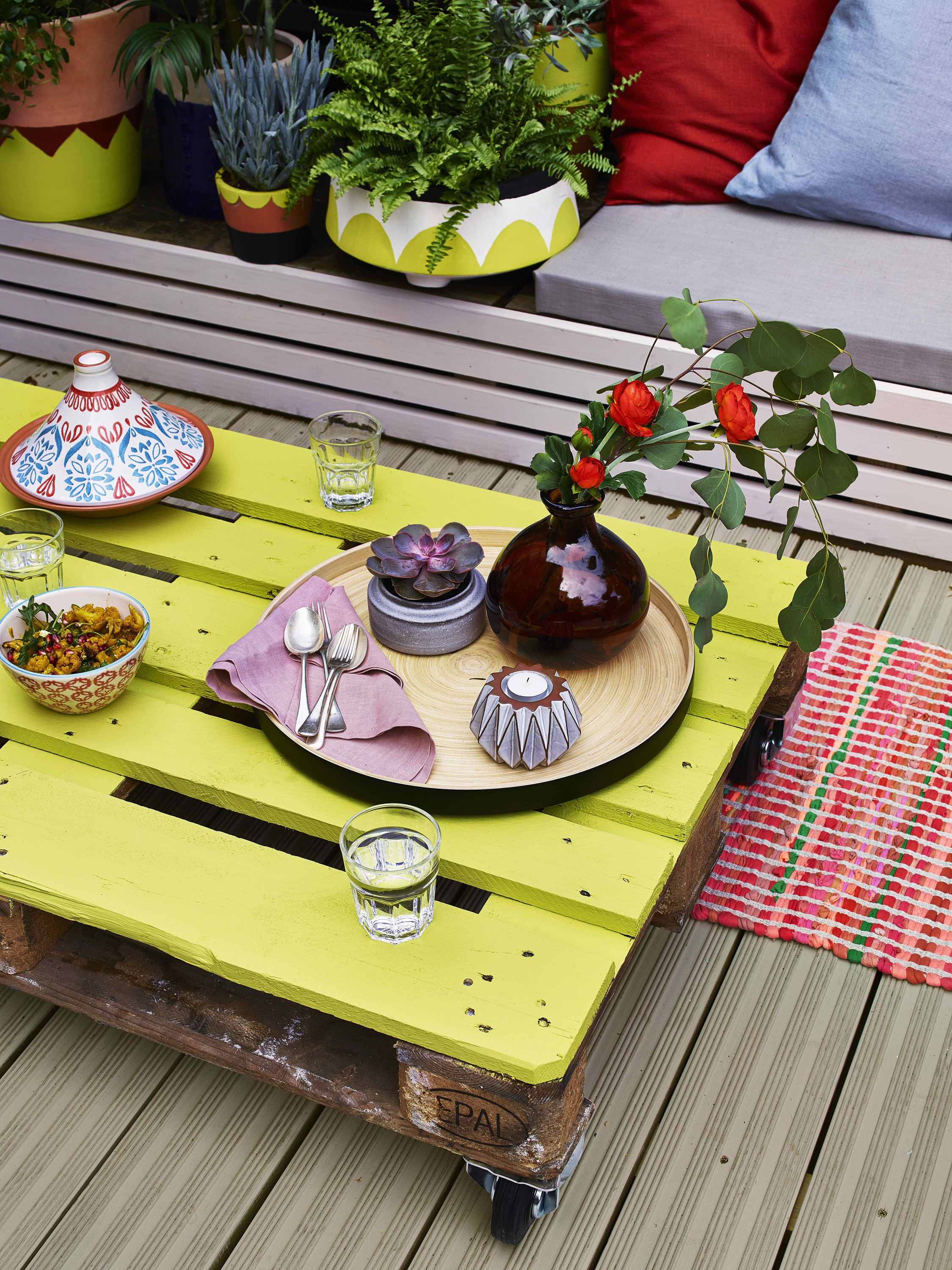
Pallets are a fabulous material for cheap garden ideas, and if you're handy with some DIY skills, you can use them to build all sorts of stylish pieces of furniture.
We're loving this coffee table which offers a sunny boost of yellow to the plot. To recreate the look, all you need to do is give a pallet a sand, a coat of paint, and a set of wheels for extra versatility.
Looking for more ideas? Take a look at our guide on how to make a pallet bench.
42. Choose a budget-friendly trellis
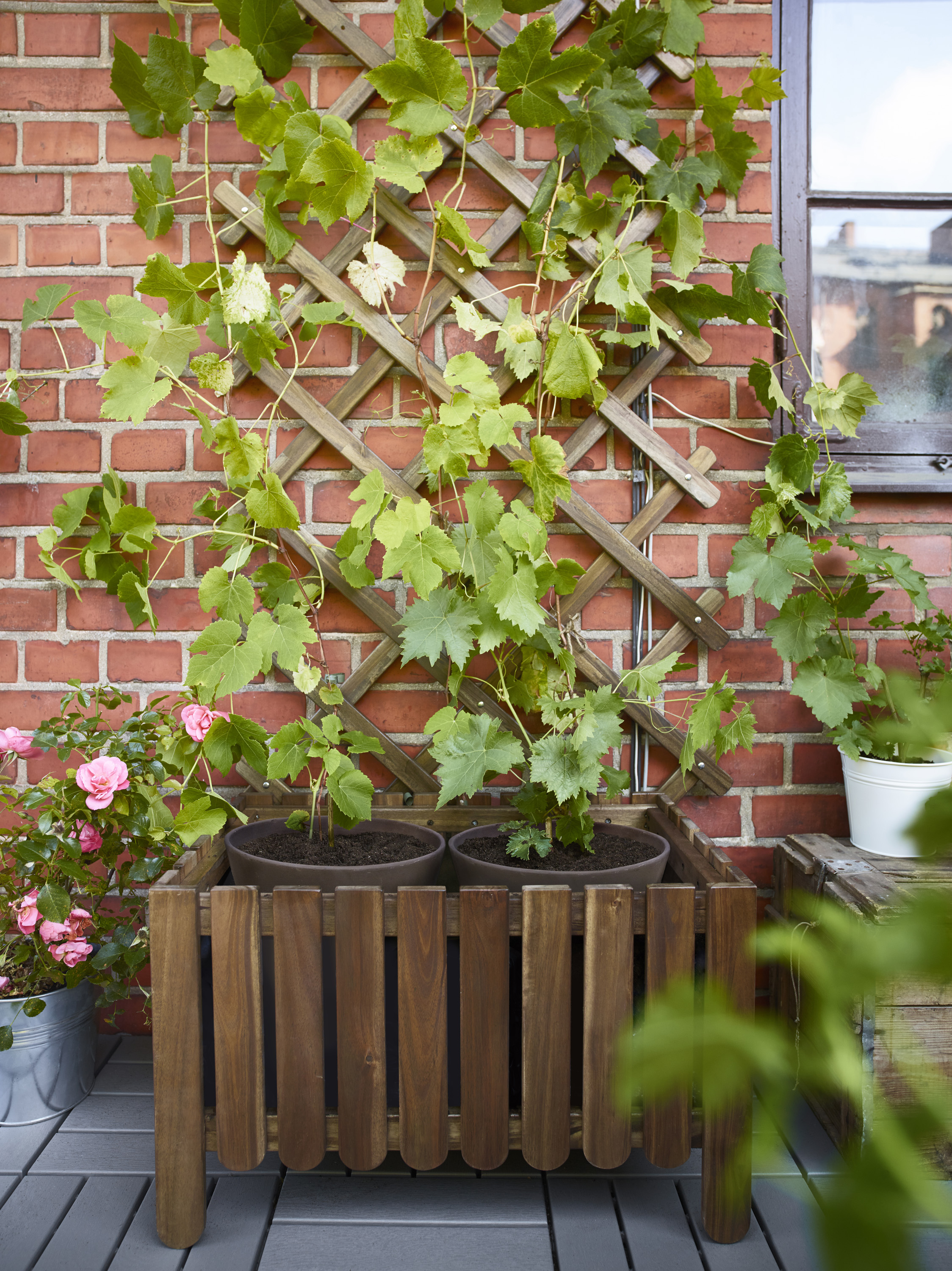
This is a such fabulous idea for so many reasons. Whether you're tight on space, need to cover unsightly walls without spending lots of money, or simply want to add color and scent with climbing roses, adding a simple trellis is a versatile and great-value solution.
It's perfect for balcony garden ideas too as it's an easy and inexpensive way to create an area for growing fruit and veg, or for showing off your favorite climbing plants.
What are budget-friendly materials to use in a garden?
We've covered a few budget-friendly materials for a backyard already, but here's a handy checklist to refer to when planning your plot and considering garden ideas on a budget:
- Gravel is an inexpensive solution for pathways, and with a variety of colors to choose from, can look stylish too. If you prefer paving, there are often cheap varieties available that still look chic.
- You can also create softer, grass pathways using your lawn mower – grass seed is very affordable.
- Opt for reclaimed materials when it comes to edging or fencing – old red bricks have a vintage feel which works perfectly for cottage garden ideas, or try corrugated metal or painted pallets for fences. Reclaimed materials can also come in handy for planters.
- Grow your plants from seed or take cuttings.
- Even cheap pieces from second-hand or discount stores can be revamped with a lick of inexpensive exterior paint.

An experienced freelance journalist, editor and columnist writing for national magazines and websites, Fiona now specialises in gardens. She enjoys finding and writing about all kinds, from the tiniest town plots to impressively designed ones in grand country houses.
- Lisa FazzaniFreelance writer
